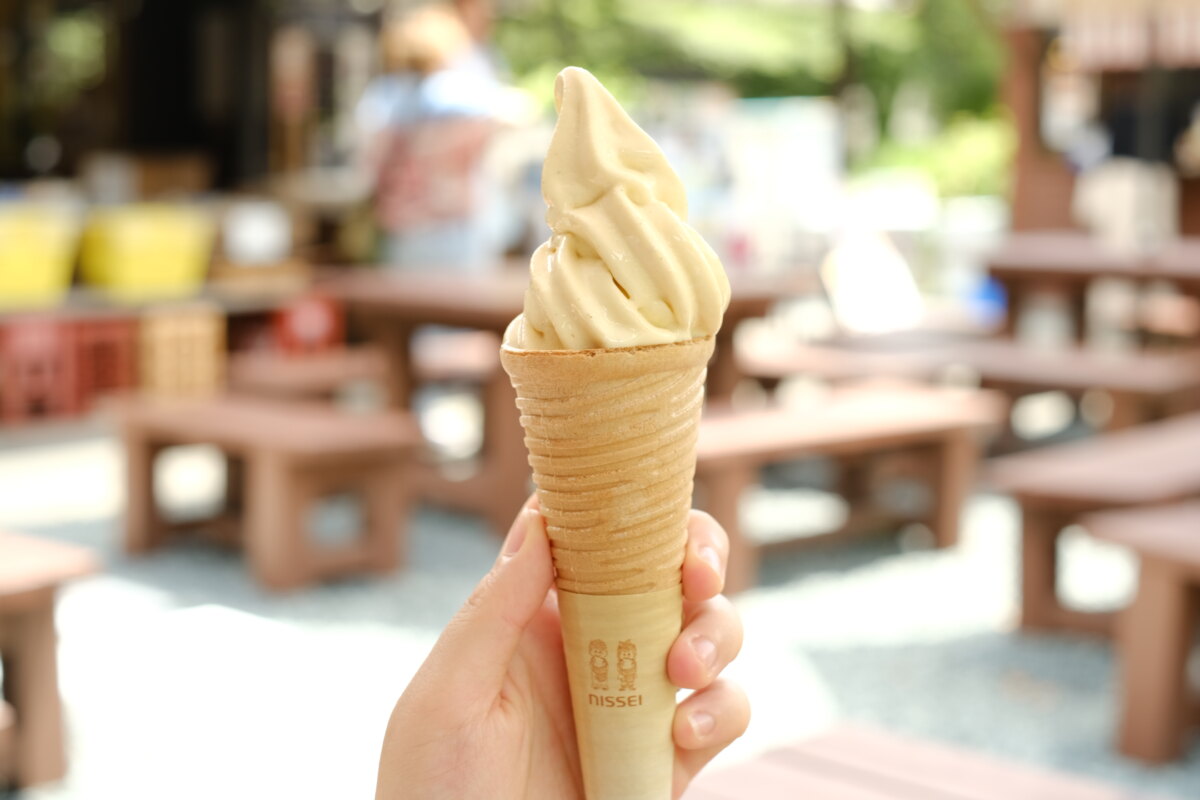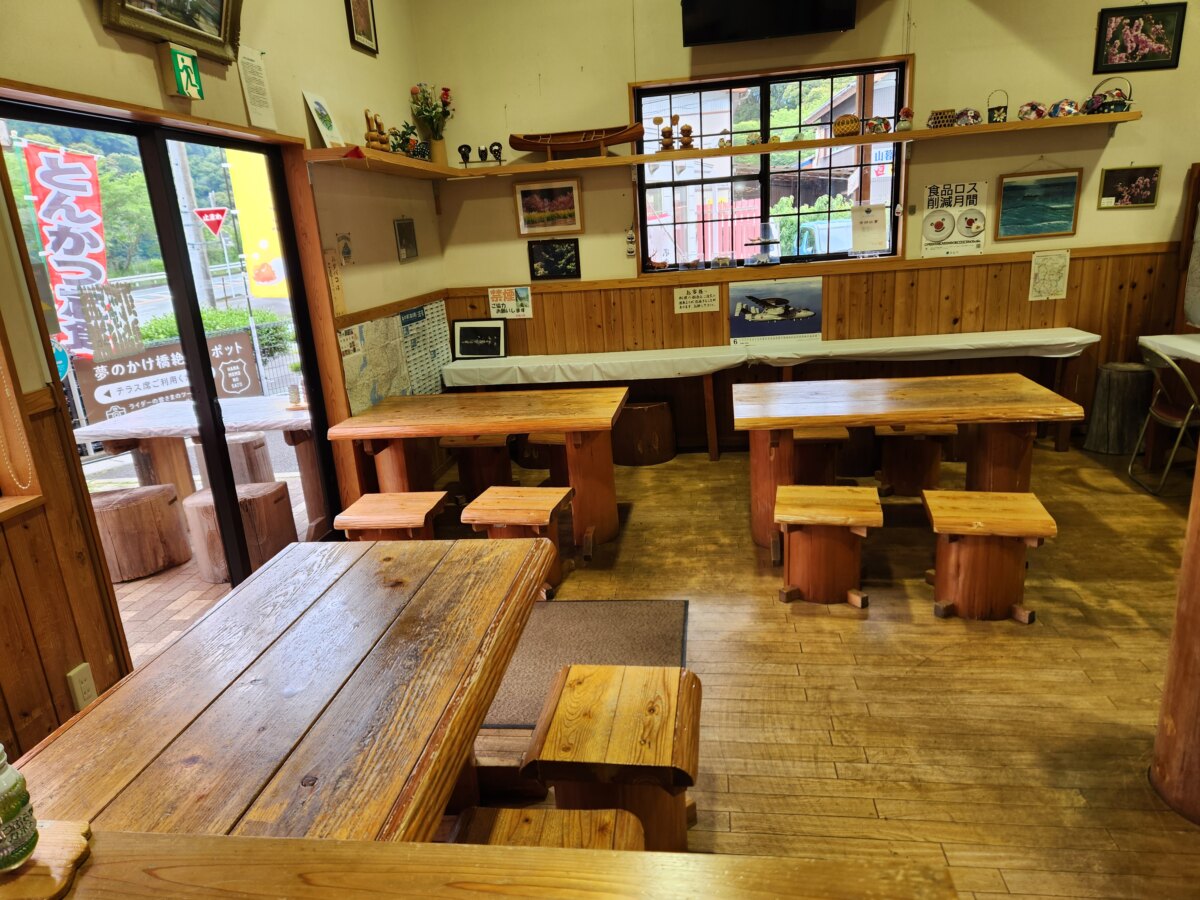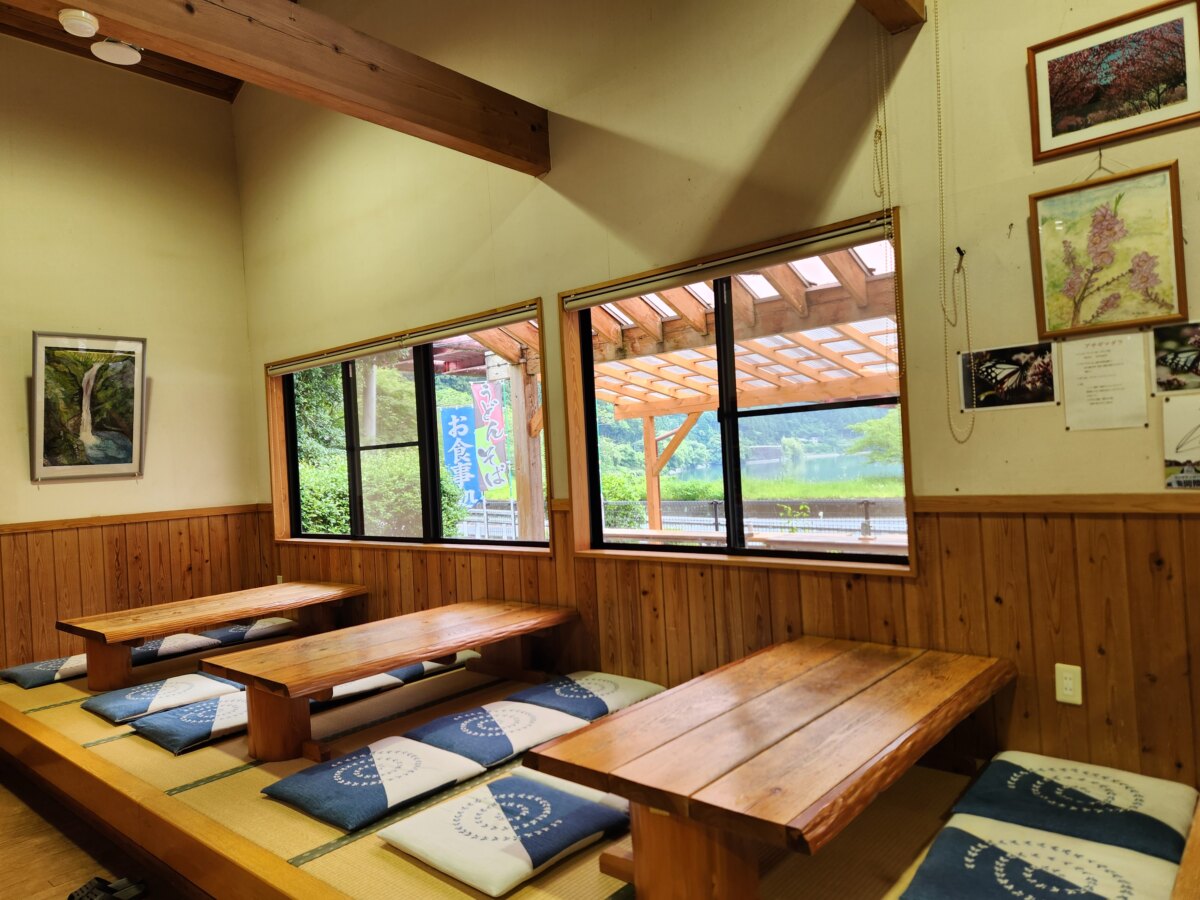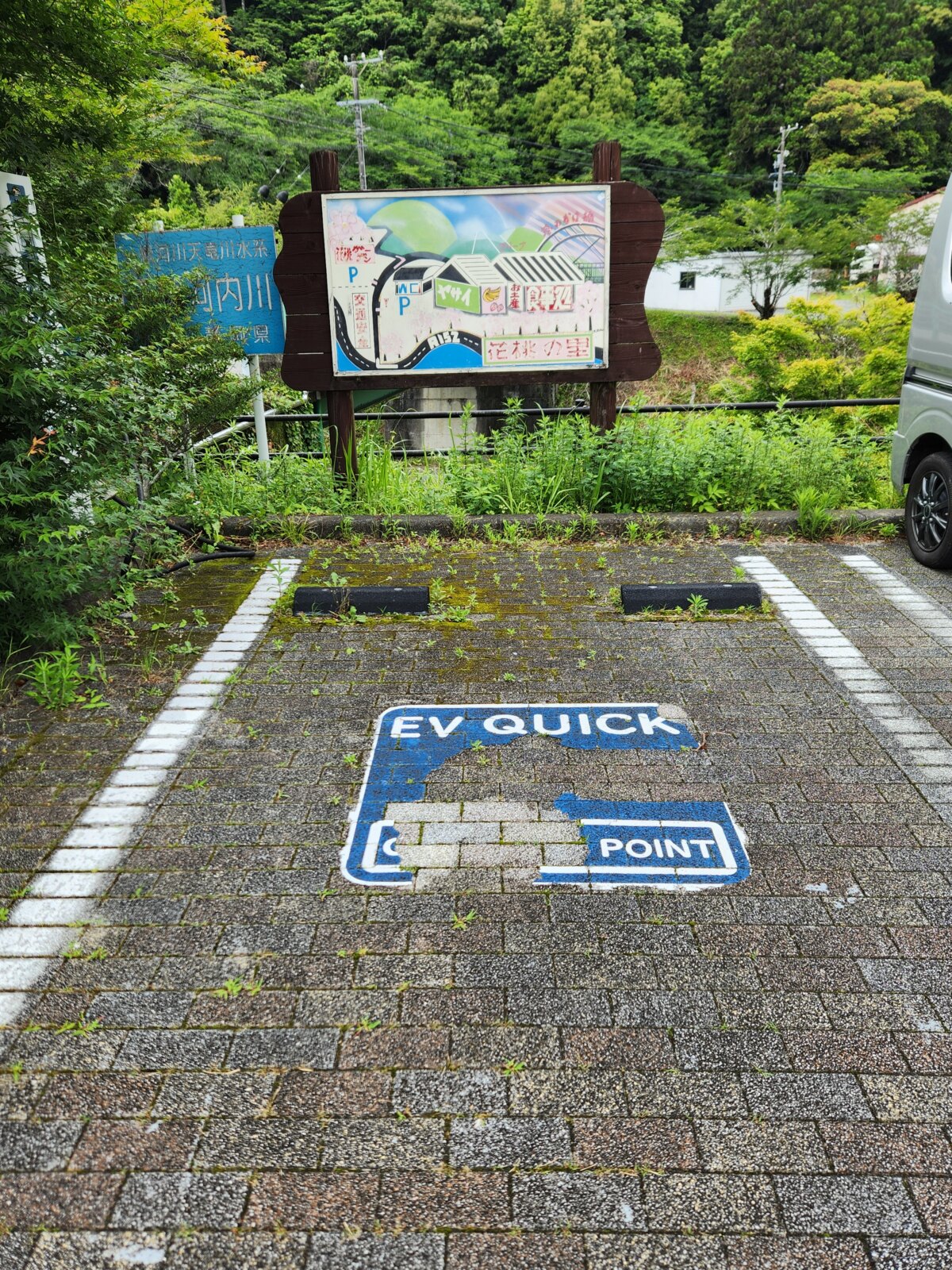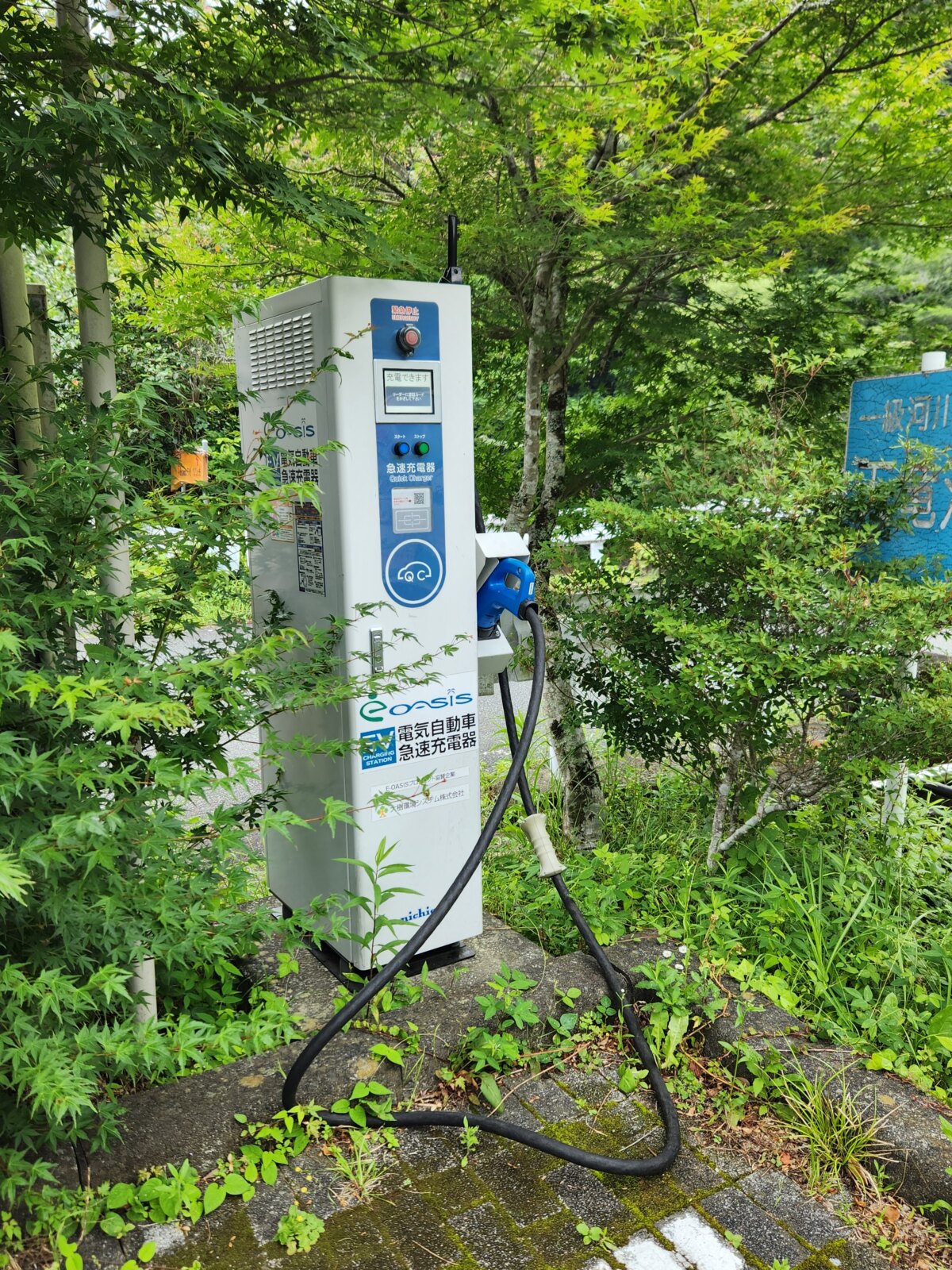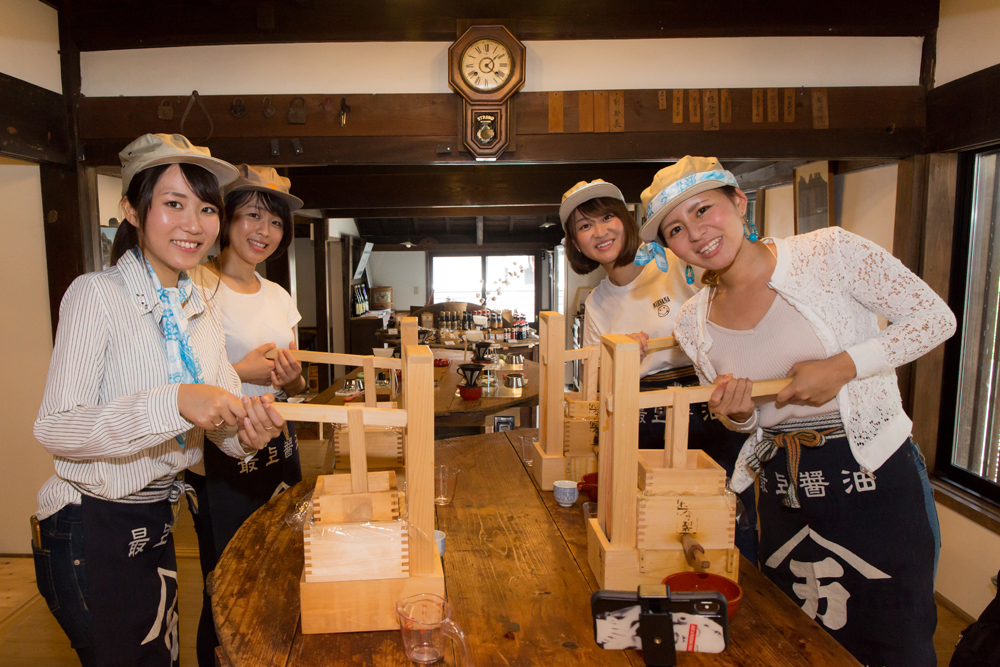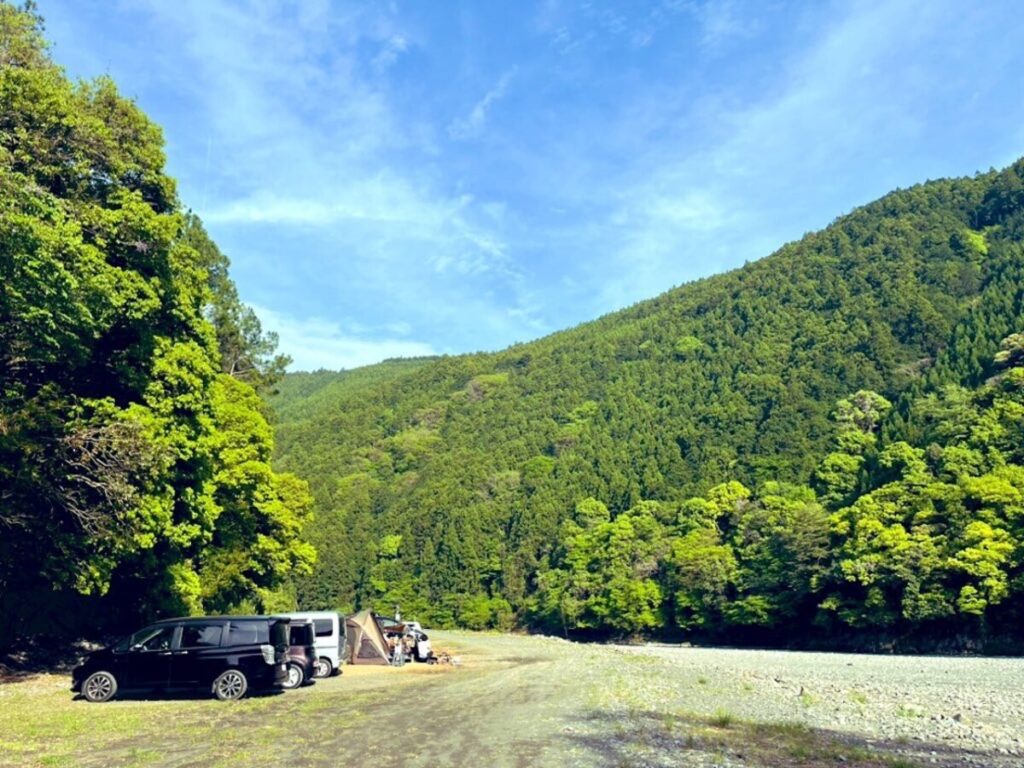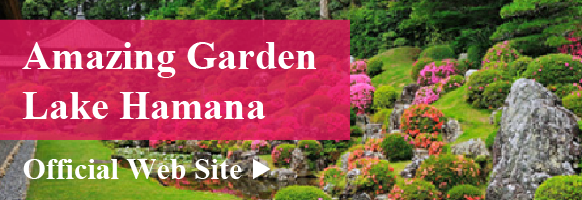Get to Know Hamamatsu
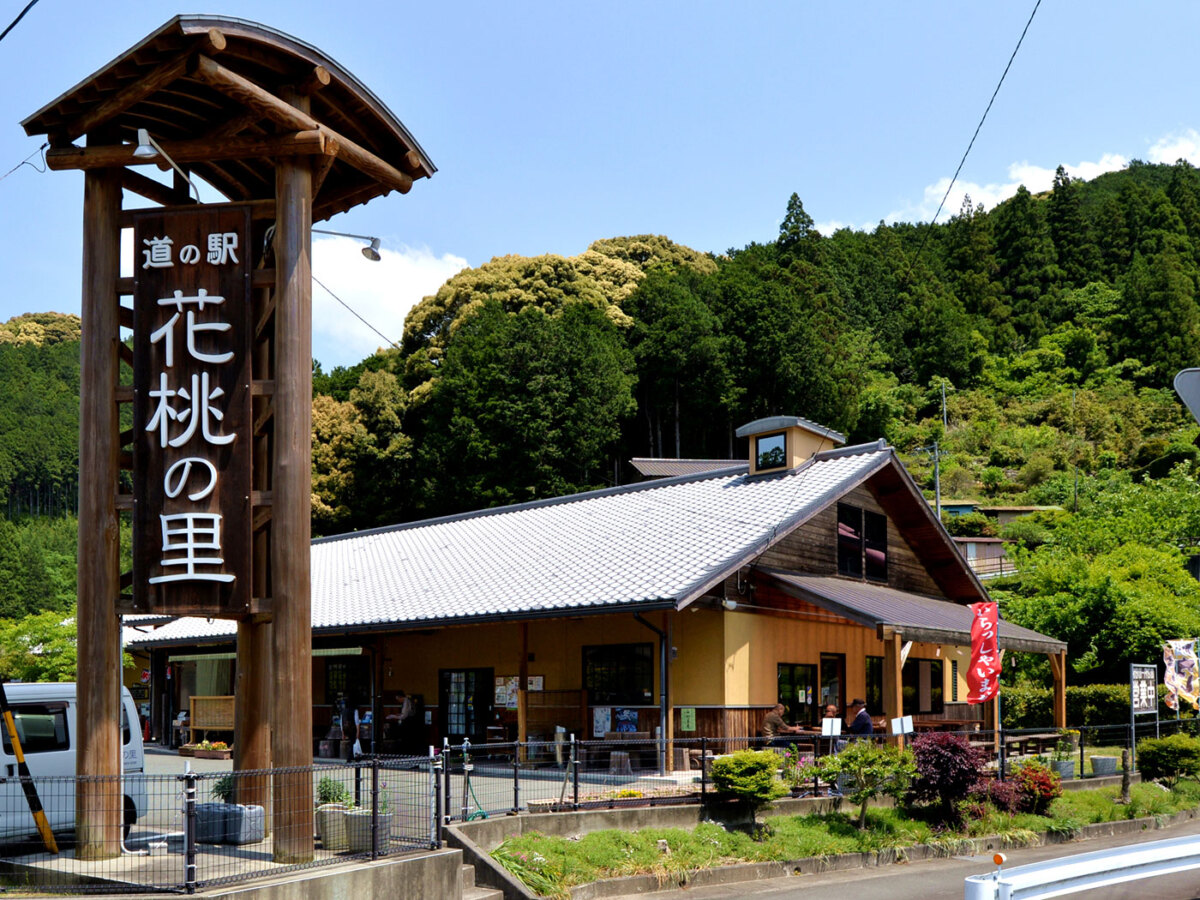
- Eat
- Watch
- Buy
Experience Spring Beauty and Local Flavors at Michi-no-Eki Hanamomo-no-Sato
Nestled in mountains and greenery, this Michi-no-Eki lives up to its name—hanamomo begin bloom around mid-March. It has a local market and eatery, making it a perfect place to take a break…
Nestled in a lush, mountainous landscape, Tenryu Sozu Hanamomo-no-Sato is a charming countryside Michi-no-Eki — a Japanese-style roadside station offering local food, souvenirs, and scenic rest stops — surrounded by beautiful nature.
As its name suggests, vibrant hanamomo (flowering peach trees) begin to bloom here in mid-March each year.
At their peak, over 350 trees burst into full bloom, painting the surrounding mountainsides with a striking contrast of green and pink.
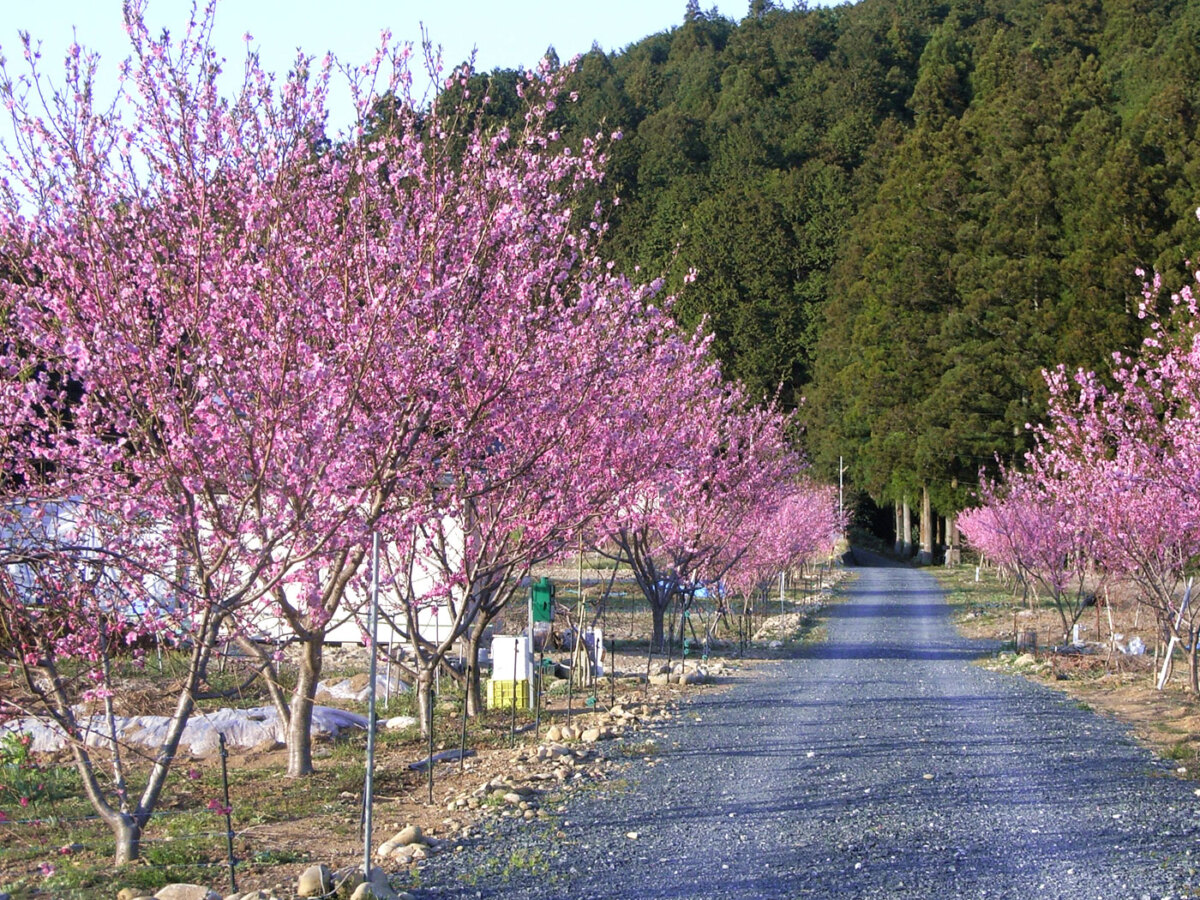
Image courtesy of: Michi-no-Eki Tenryu Sozu Hanamomo-no-Sato Official Website
At the roadside station’s shops, you’ll find local specialties like their famous wheat manju and special miso manju, alongside fresh vegetables and other regional products.
With a cozy eatery on site, it’s a perfect spot to relax and take a break during your visit.
This time, we visited Michi-no-Eki Tenryu Sozu Hanamomo-no-Sato to give you a detailed look at the facilities, popular products, parking info, and more♪
When is the best time to see the hanamomo blossoms at Michi-no-Eki Tenryu Sozu Hanamomo-no-Sato?
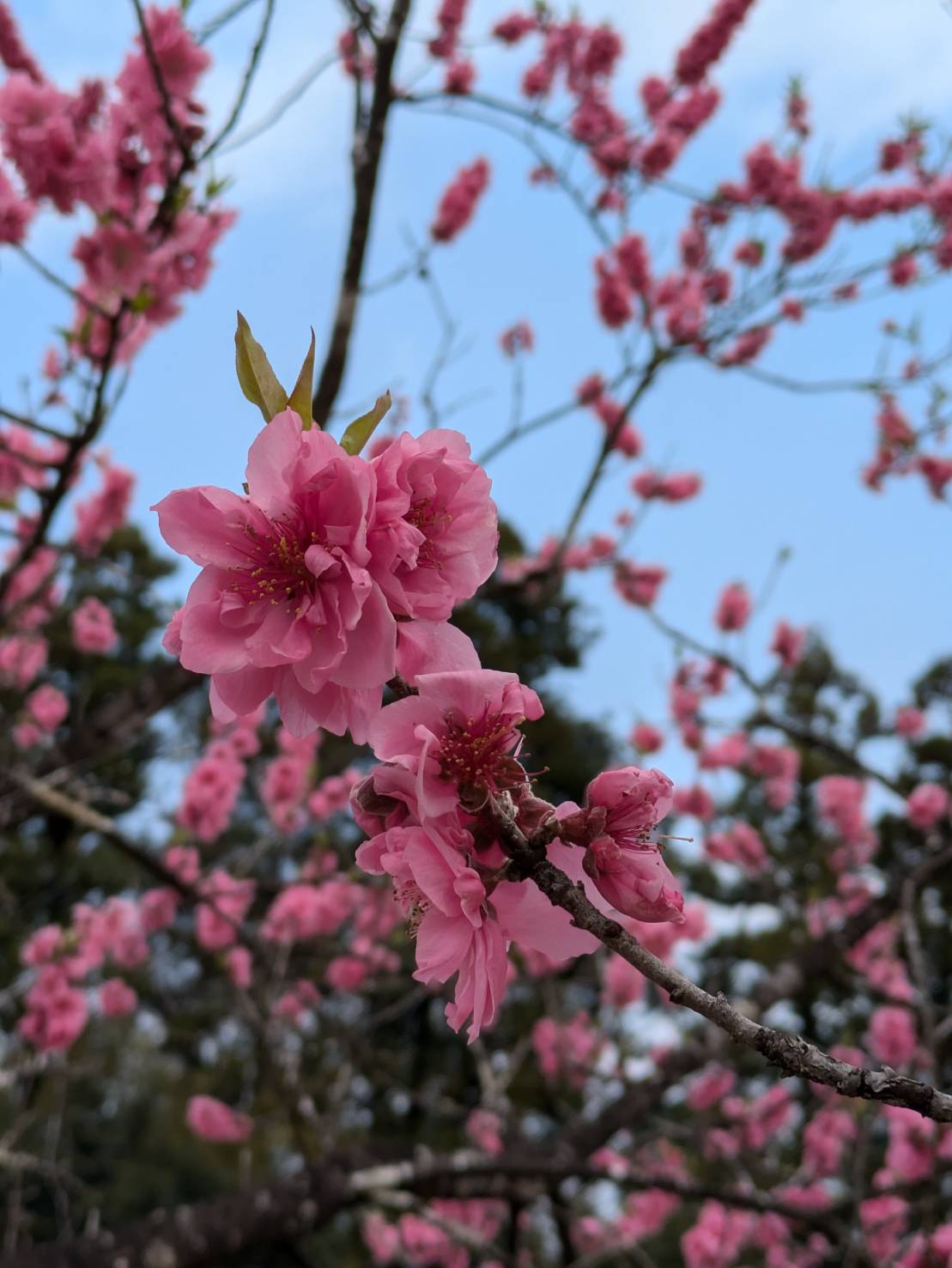
Image courtesy of: Hanamomo-no-Sato
The hanamomo bloom for a short period, typically from mid-March to early April each year.
Michi-no-Eki Tenryu Sozu Hanamomo-no-Sato is a popular spot year-round—not just during the hanamomo blooming season—thanks to its stunning mountain views and the majestic Tenryu River, allowing visitors to fully experience the beauty of nature.
What kind of place is Michi-no-Eki Tenryu Sozu Hanamomo-no-Sato?
Located about 11 km from the Hamamatsu-Hamakita Interchange on the Shin-Tomei Expressway, and roughly a 25-minute drive away, Michi-no-Eki Tenryu Sozu Hanamomo-no-Sato is nestled in a beautiful countryside surrounded by the lush Tenryu forests.

Image courtesy of: Michi-no-Eki Tenryu Sozu Hanamomo-no-Sato Official Website
Michi-no-Eki Tenryu Sozu Hanamomo-no-Sato, set in the heart of nature, is also a popular spot for enjoying peaceful walks and forest bathing.
Climb the stairs behind the building, and you’ll find a path leading to the “Yume no Kakehashi” (Dream Bridge), where you can enjoy a 473.7-meter-long aerial stroll overlooking the Tenryu River below.
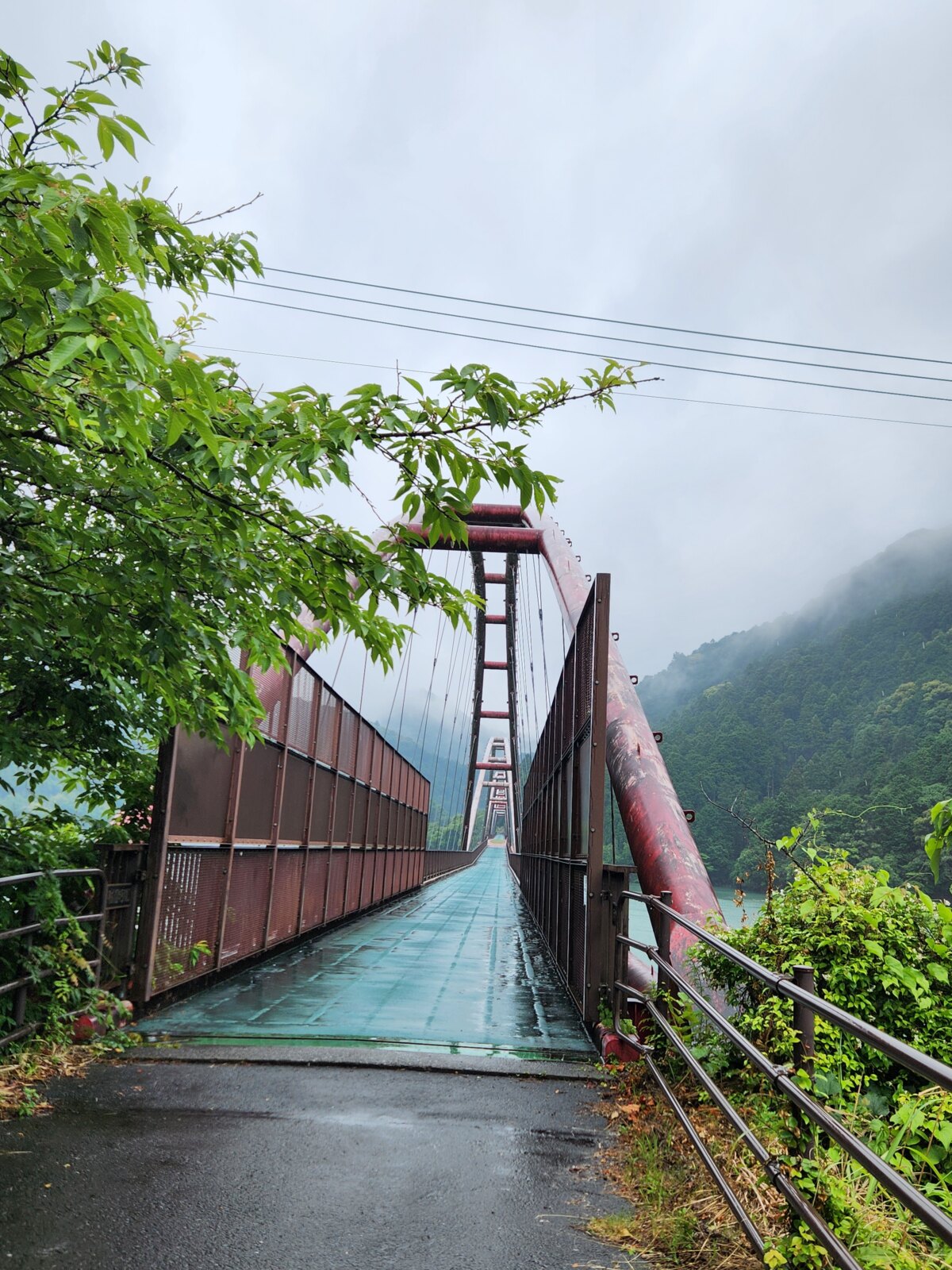
The view from the bridge is just as breathtaking, with the mighty Tenryu River and mysterious mountains stretching out before you—a scene that makes you forget the hustle and bustle of everyday life.
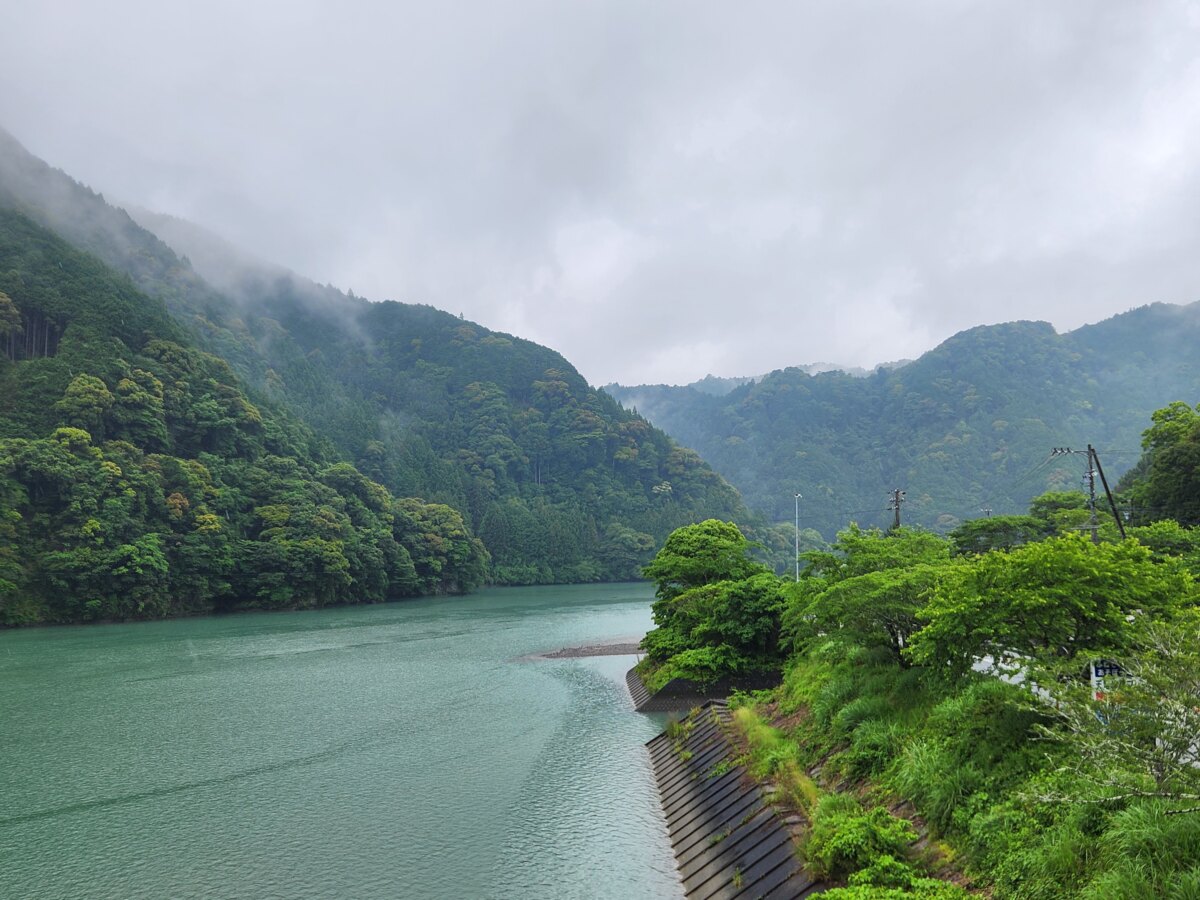
The day we visited happened to be rainy, but the soft, misty scenery had its own quiet charm.
On clear days, though, you can enjoy crisp, refreshing views like this!
↓↓↓
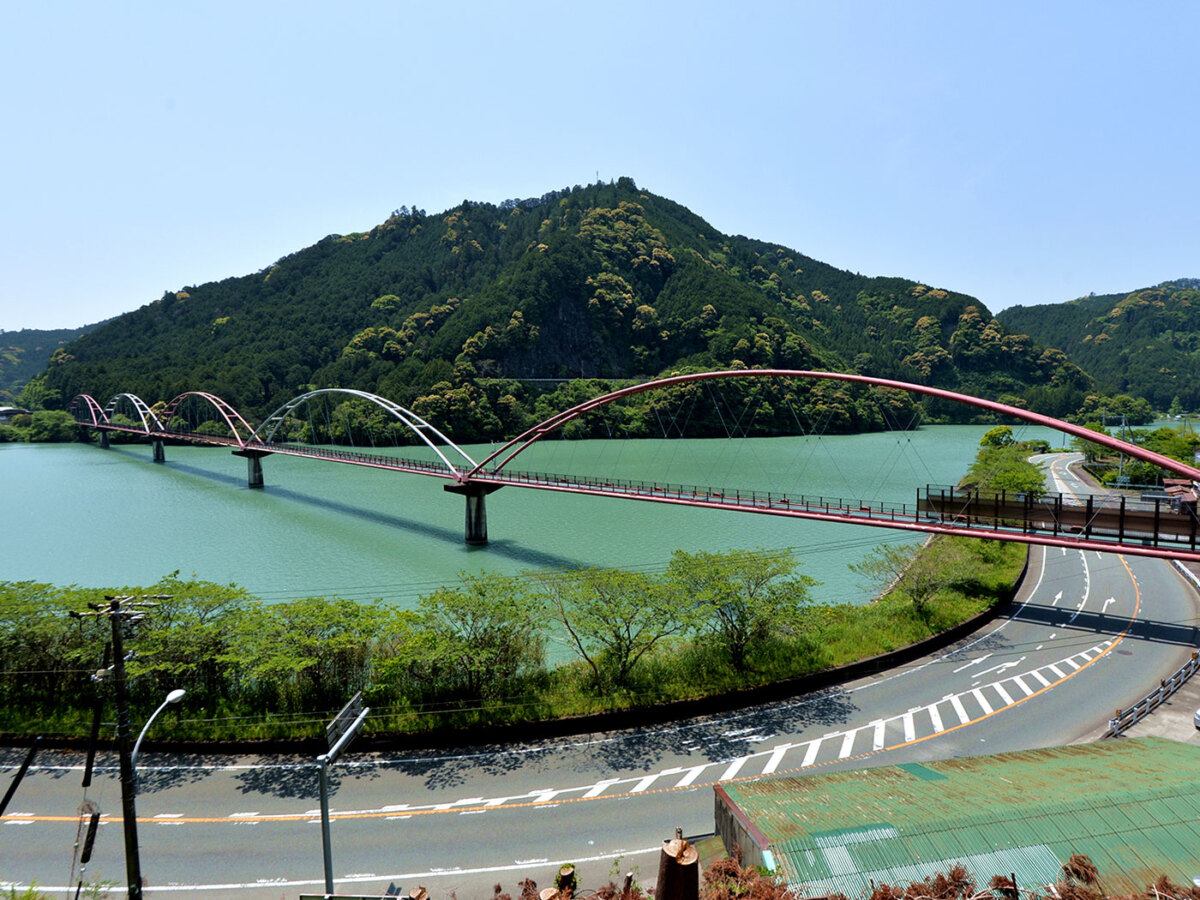
Image courtesy of: Michi-no-Eki Tenryu Sozu Hanamomo-no-Sato Official Website
Michi-no-Eki Tenryu Sozu Hanamomo-no-Sato began over 30 years ago, when local residents started selling handmade goods and local products from a simple tent.
On April 25, 2001, the local community organization Hanamomo-no-Sato built a new facility and officially opened as a Michi-no-Eki.
Today, the shop is lined with popular local products, including Tenryu-grown tea, fresh regional vegetables, handcrafted chairs and cutting boards made from Tenryu forest wood, unique sweets made with locally harvested chestnuts, and handmade manju you won’t find anywhere else.
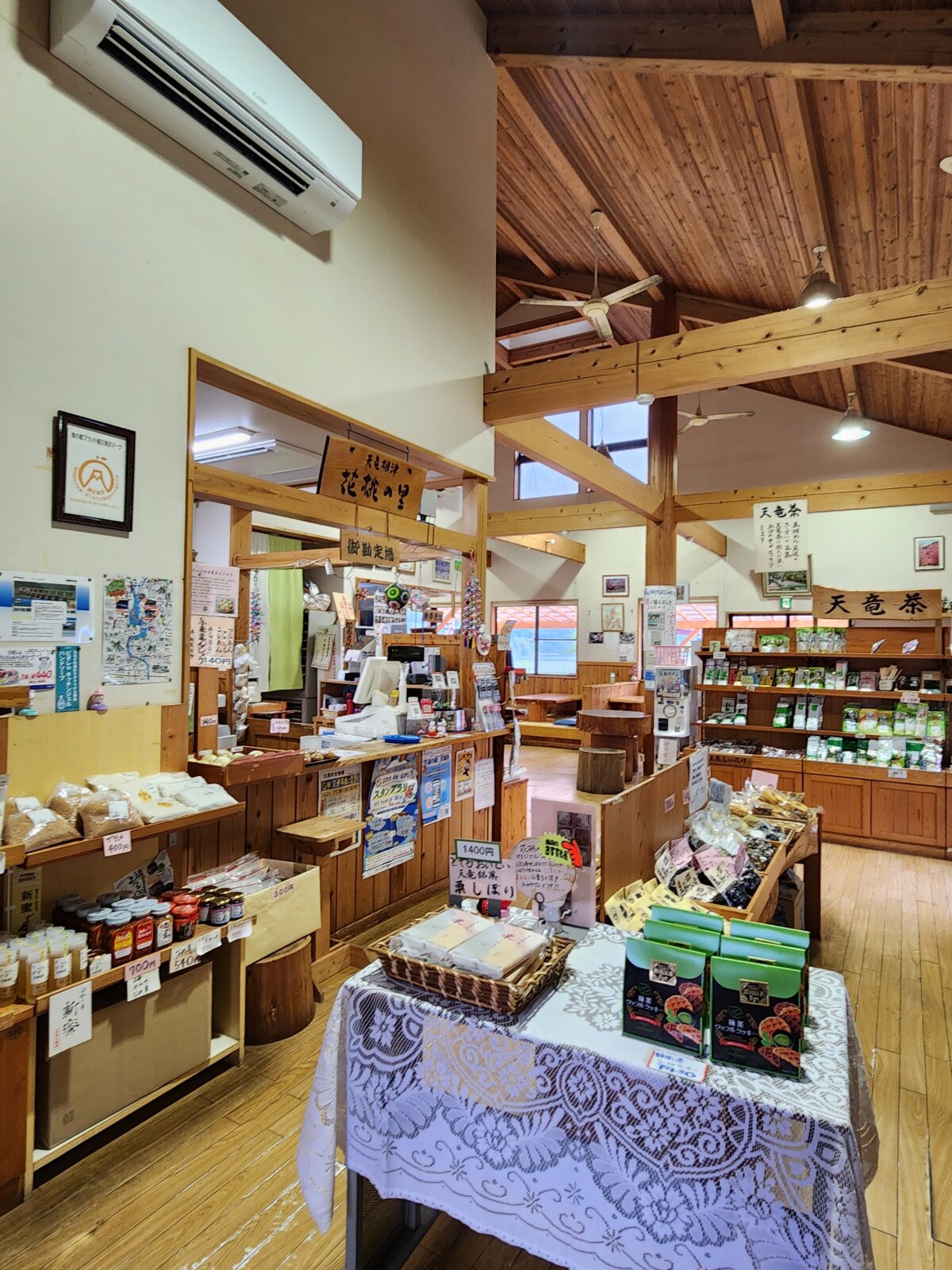
Next to the main shop building, you’ll find a multi-purpose community space that can accommodate around 50 people, as well as a traditional Japanese-style room for groups of 10 to 25.
These spaces are often used for concerts, meetings, and group meals.
Reservations are required to use the multi-purpose community space or the Japanese-style room.
For availability and usage fees, please contact the facility by phone.
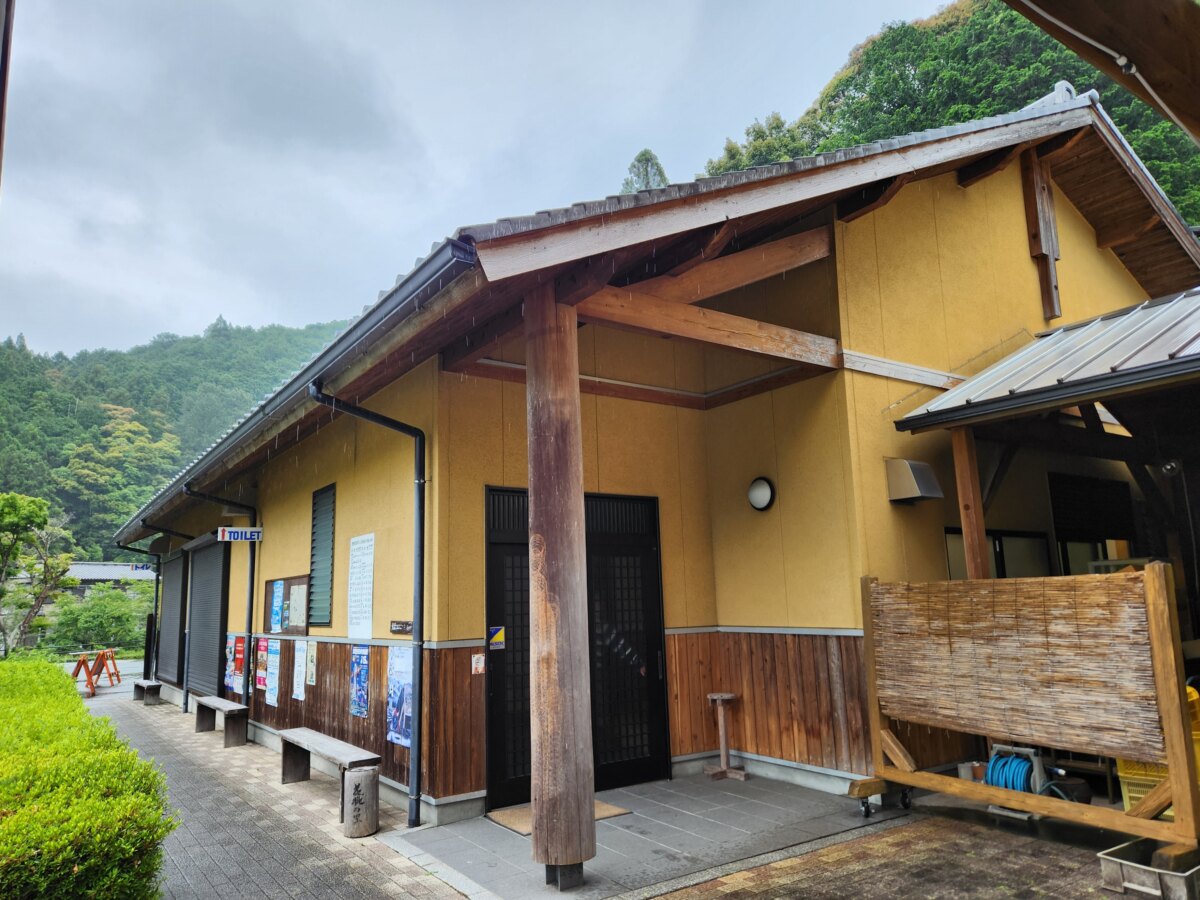
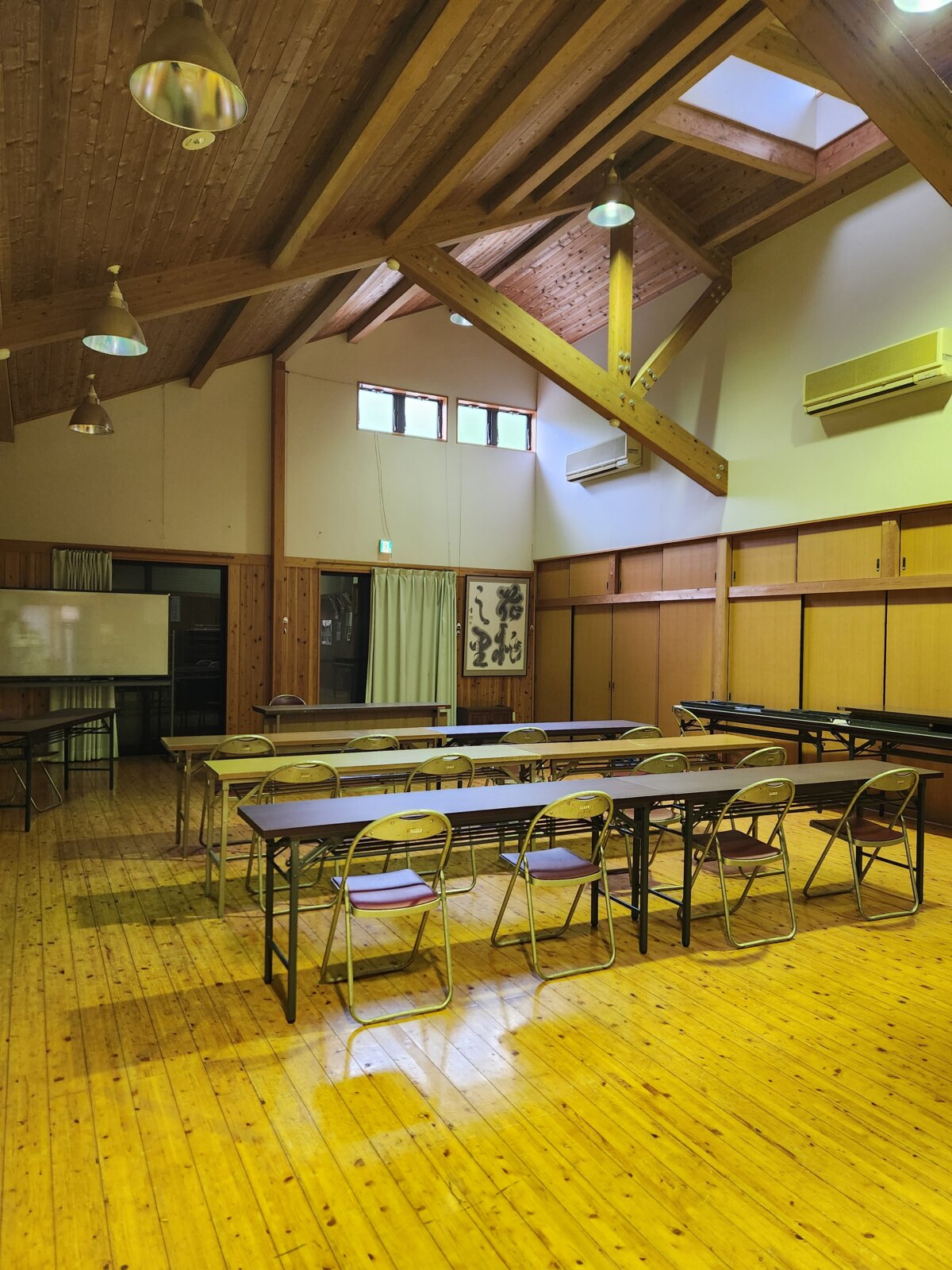
Multi-purpose Community Space (Up to 50 people)
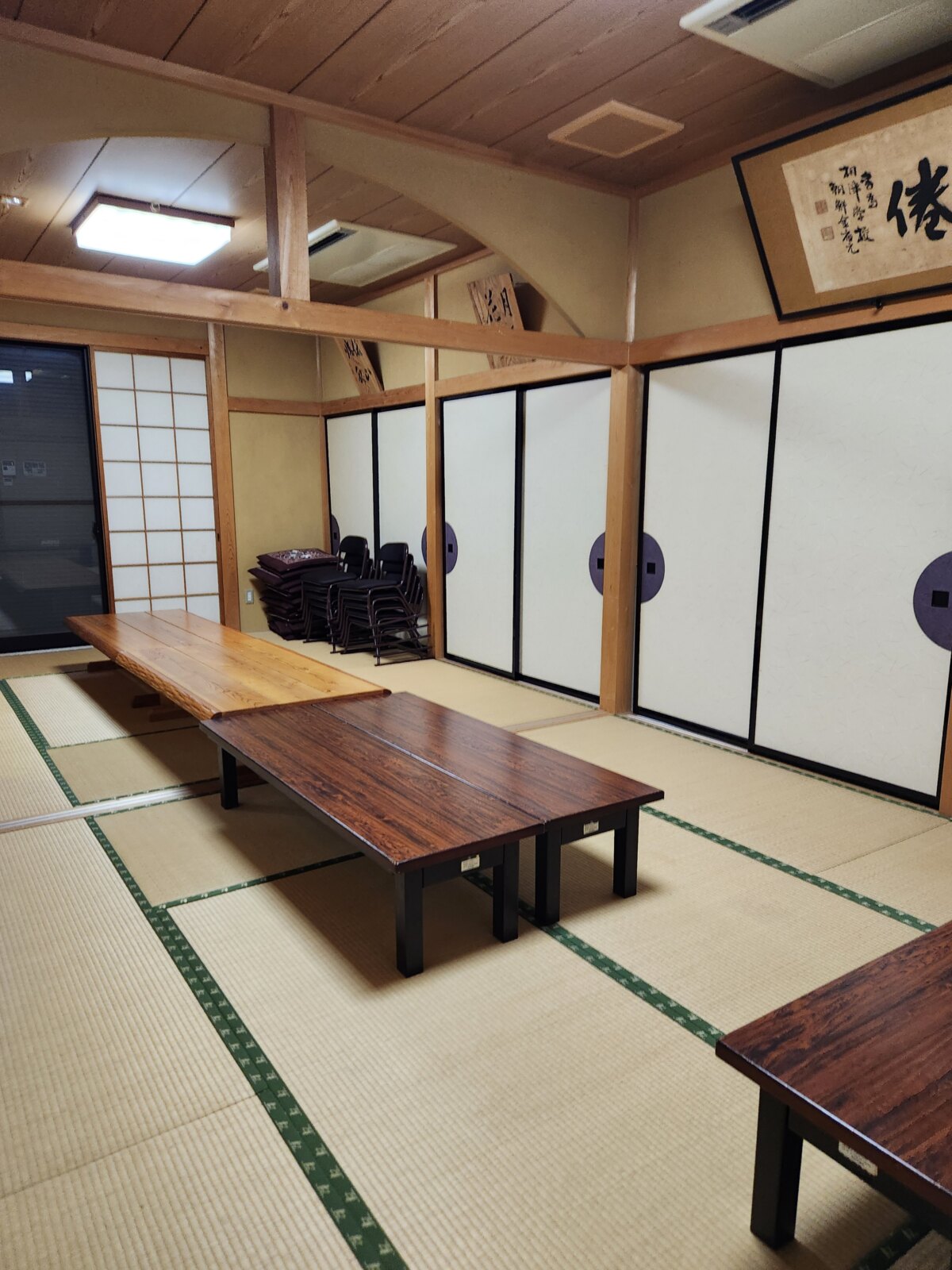
Japanese-style Room (For 10–25 people)
Popular Products at Michi-no-Eki Tenryu Sozu Hanamomo-no-Sato
Inside the spacious 180-tsubo (about 600 square meters) shop, you’ll find a wide variety of local specialties—starting with the ever-popular handmade manju, which has been a hit since the station first opened.
The shelves are also stocked with fresh local vegetables, traditional crafts, dried shiitake mushrooms from the area, and fragrant Tenryu-grown tea.
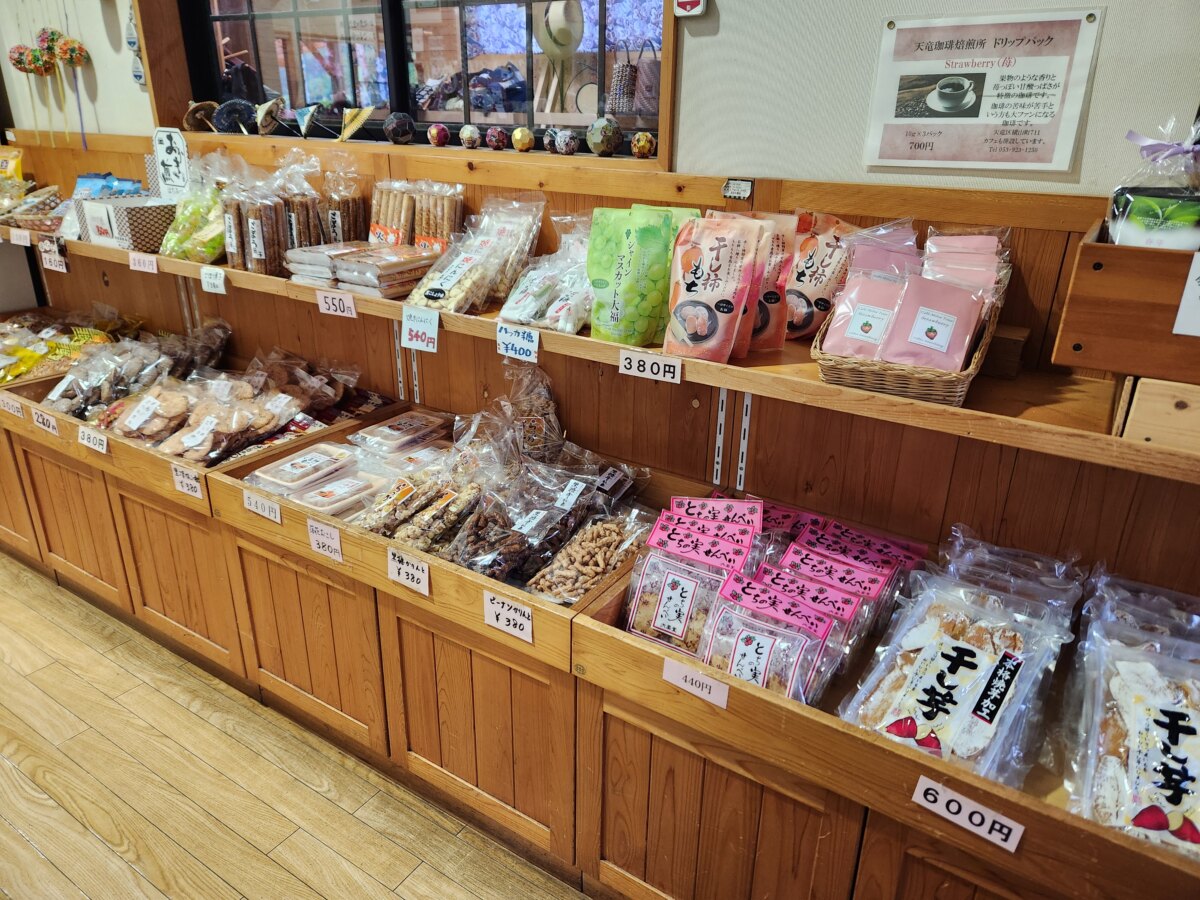
Now, let’s take a look at some of the popular products you can find at Michi-no-Eki Tenryu Sozu Hanamomo-no-Sato!
“Handmade Wheat Manju” — Almost Sold Out by Noon
One of the signature specialties of Tenryu Sozu Hanamomo-no-Sato is the “Wheat Manju,” lovingly made by local mothers.
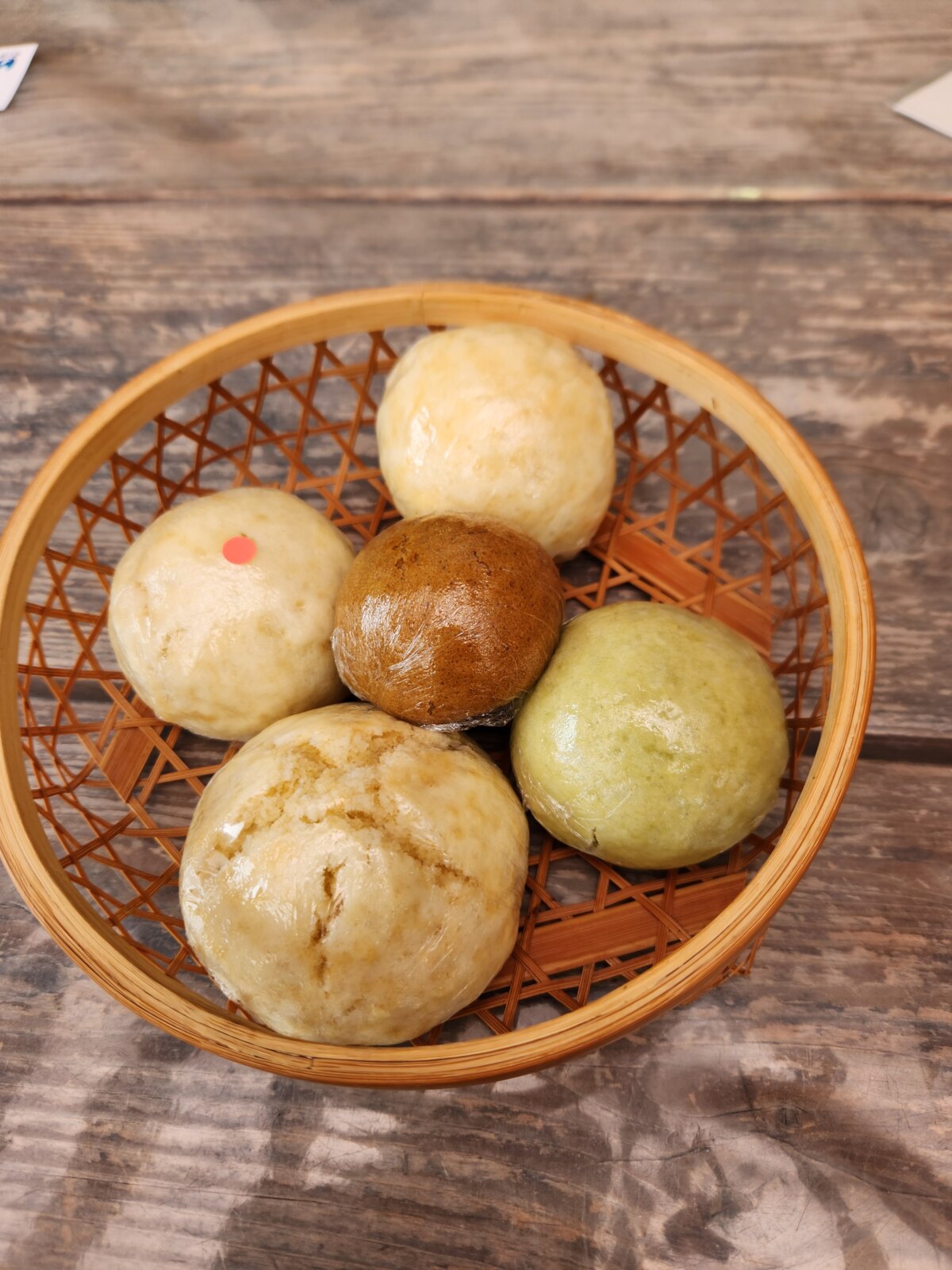
This has been a popular product since the station opened and usually sells out by noon.
Some visitors even come from far away just to try the “Wheat Manju.”
When the shop opens, you can enjoy them fresh and warm, straight from the kitchen.
The flavors available are four kinds: sweet red bean paste (tsubuan), matcha with sweet red bean paste, smooth red bean paste (koshian), and wheat manju without filling.
Each is sold for 140 yen.
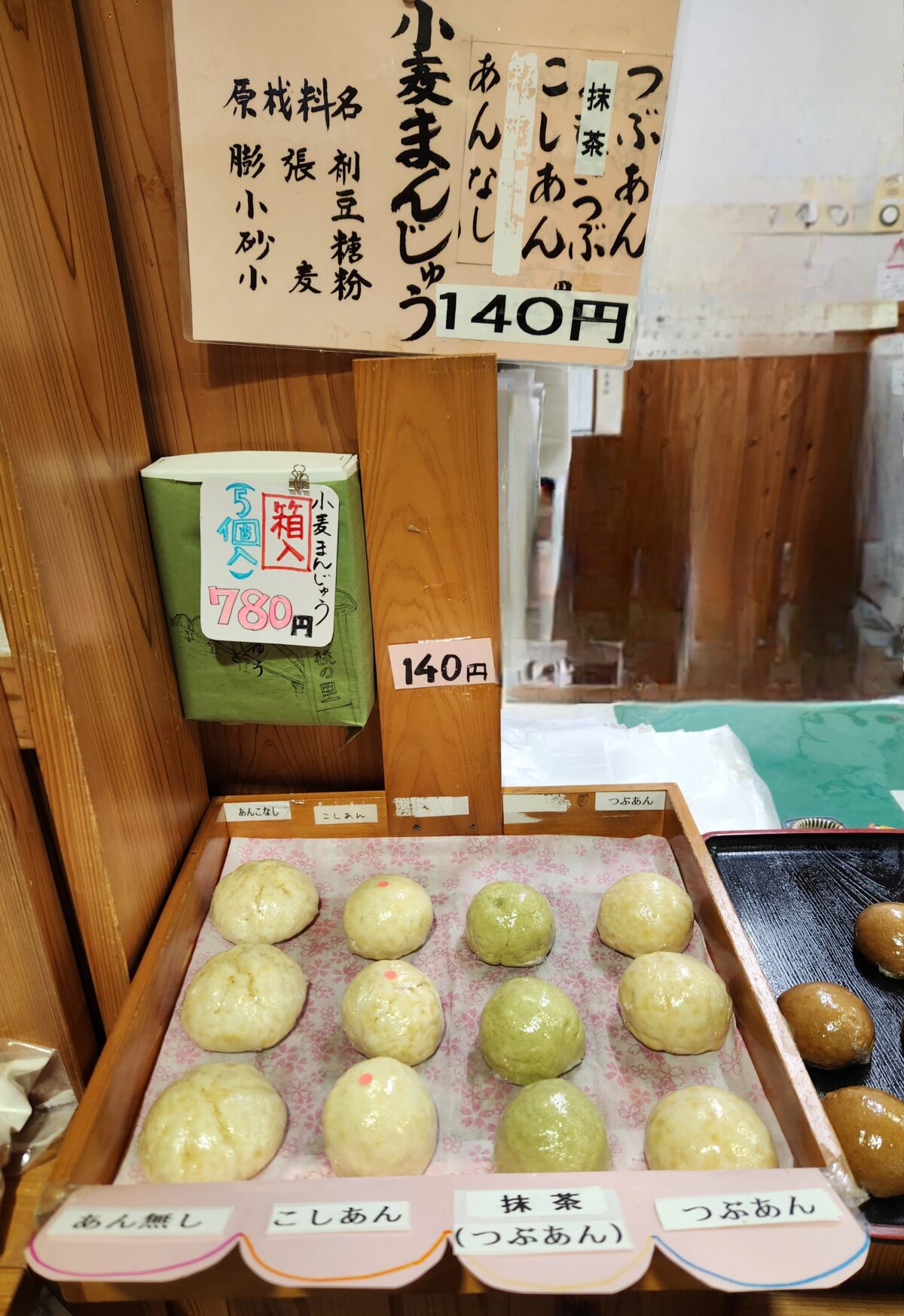
The secret to their deliciousness lies in the skilled hands of the makers.
They carefully adjust the moisture and seasoning based on the day’s weather, humidity, and the quality of ingredients—relying on years of experience and intuition.
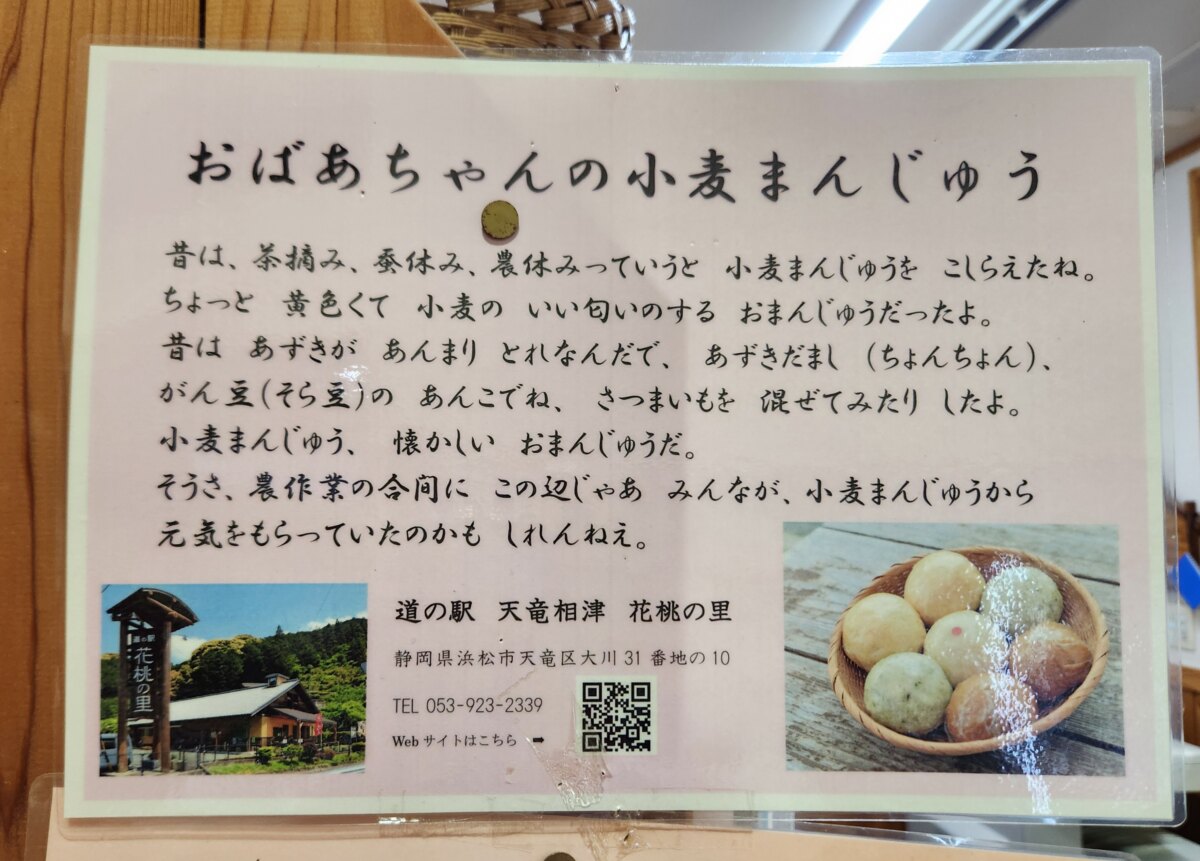
No unnecessary preservatives or artificial seasonings are used, so you can enjoy the natural flavors of the ingredients.
There are also seasonal limited items, and among them, the “Hanamomo Manju,” sold only in spring from early March through the Golden Week holidays, is a fan favorite that many look forward to every year.
Another popular item is the “Miso Man,” featuring a special miso-infused dough wrapped around mildly sweet white bean paste for a perfect balance of flavors.
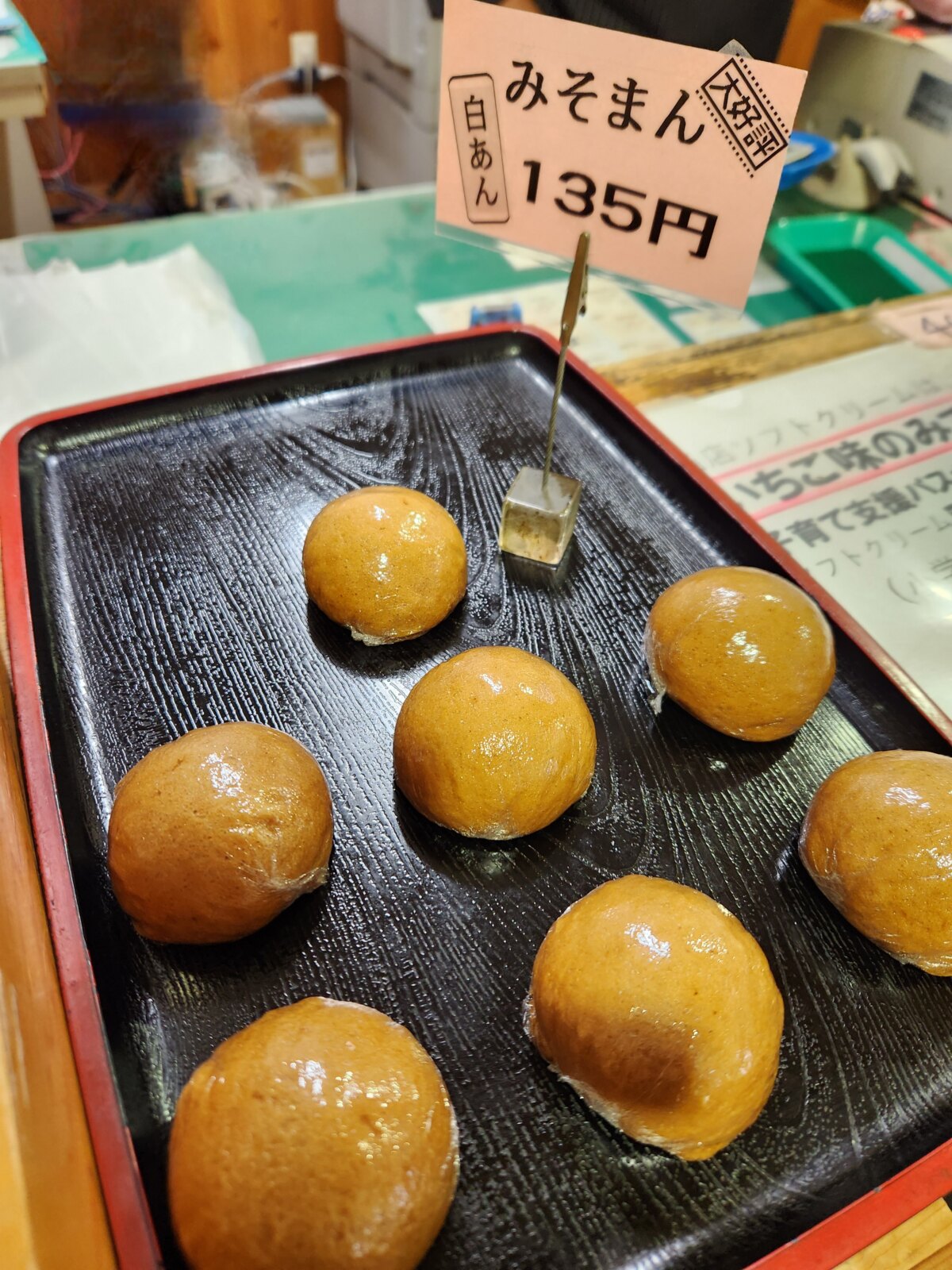
Thanks to its mild sweetness, the “Miso Man” is known for being so delicious that you could eat several at once.
It pairs perfectly with Tenryu tea and has become a beloved staple at Tenryu Sozu Hanamomo-no-Sato.
The “Miso Man” sells for 135 yen each and, like the Wheat Manju, usually sells out by noon—so be sure to get yours early!
Refreshing Aroma and Balanced Bitterness of Tenryu Tea
The Tenryu region, with its unique mountain climate and significant temperature differences, creates the perfect environment for tea cultivation.

The brewed Tenryu tea has a light young-leaf green color, and when you taste it, you’ll notice its refreshing aroma, mild bitterness, and clean, crisp flavor.
Perfect for both tea time and mealtime!

They pair perfectly with two of Tenryu Sozu Hanamomo-no-Sato’s popular treats—the “Wheat Manju” and the special “Miso Manju.”
Hinoki Cutting Boards from the Tenryu Beautiful Forest
The “Hinoki Cutting Board” made from the beautifully grained hinoki cypress of the Tenryu Beautiful Forest is another popular item.
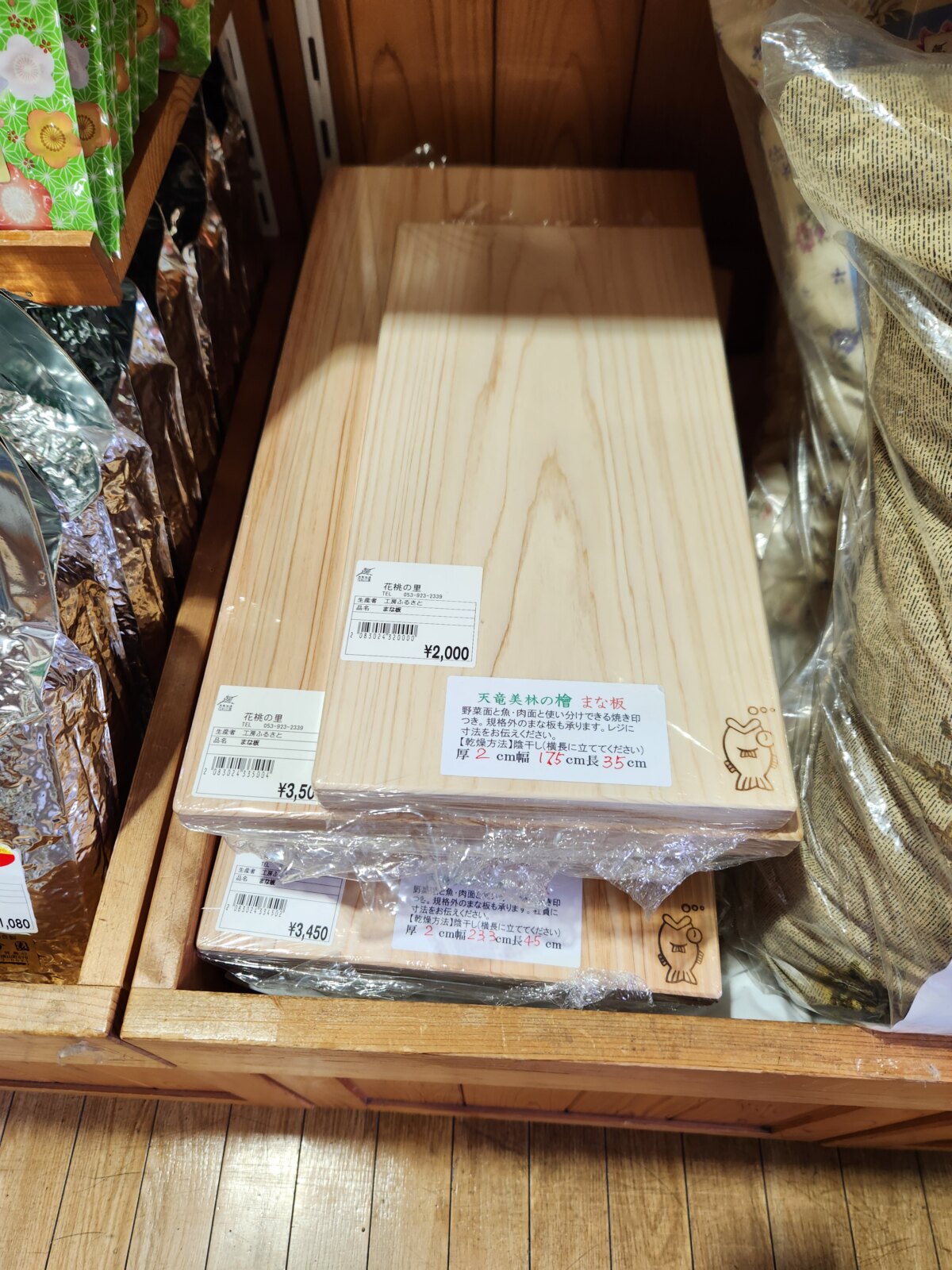
Hinoki cypress is known for its high durability and has been used as a building material for homes since long ago.
Also, the natural scent of hinoki cypress is familiar and comforting to Japanese people.
The cutting boards are about 2 to 2.5 centimeters thick and come with branded marks to help you distinguish between the vegetable side and the fish/meat side.
They come in various sizes, so you can choose the one that best fits your needs.
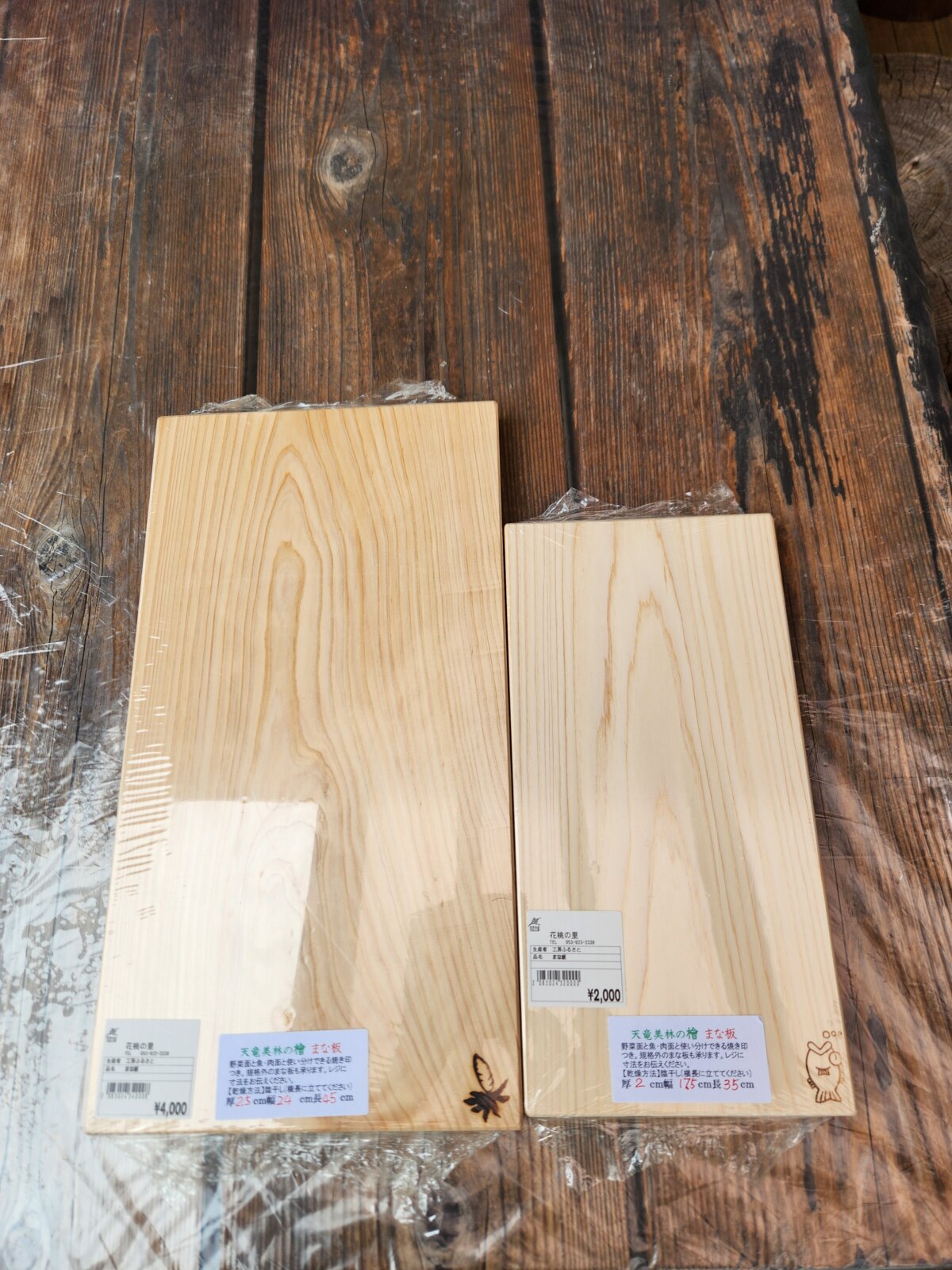
“Kuri Shibori” – Chestnut Sweets Made with Local Tenryu Chestnuts
One of the recommended products at Tenryu Sozu Hanamomo-no-Sato is “Kuri Shibori,” a baked confection made by squeezing Tenryu-grown chestnuts in a traditional cloth pouch, allowing you to enjoy the pure, natural flavor of chestnuts.
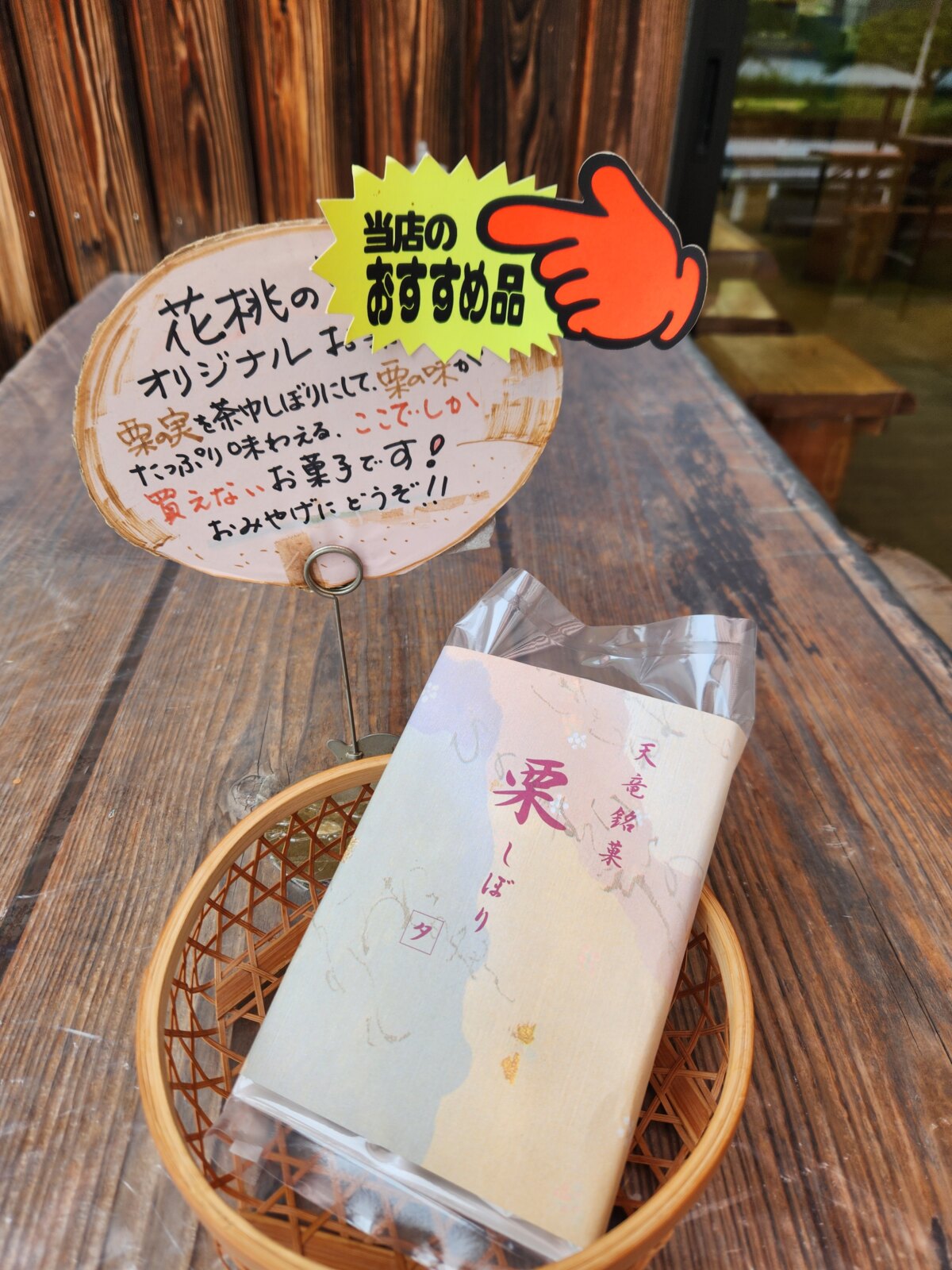
With its elegant sweetness that brings out the full rich flavor of chestnuts, “Kuri Shibori” is a special treat you can only find here at Tenryu Sozu Hanamomo-no-Sato.
They are sold in sets of six for 1,400 yen (tax included).
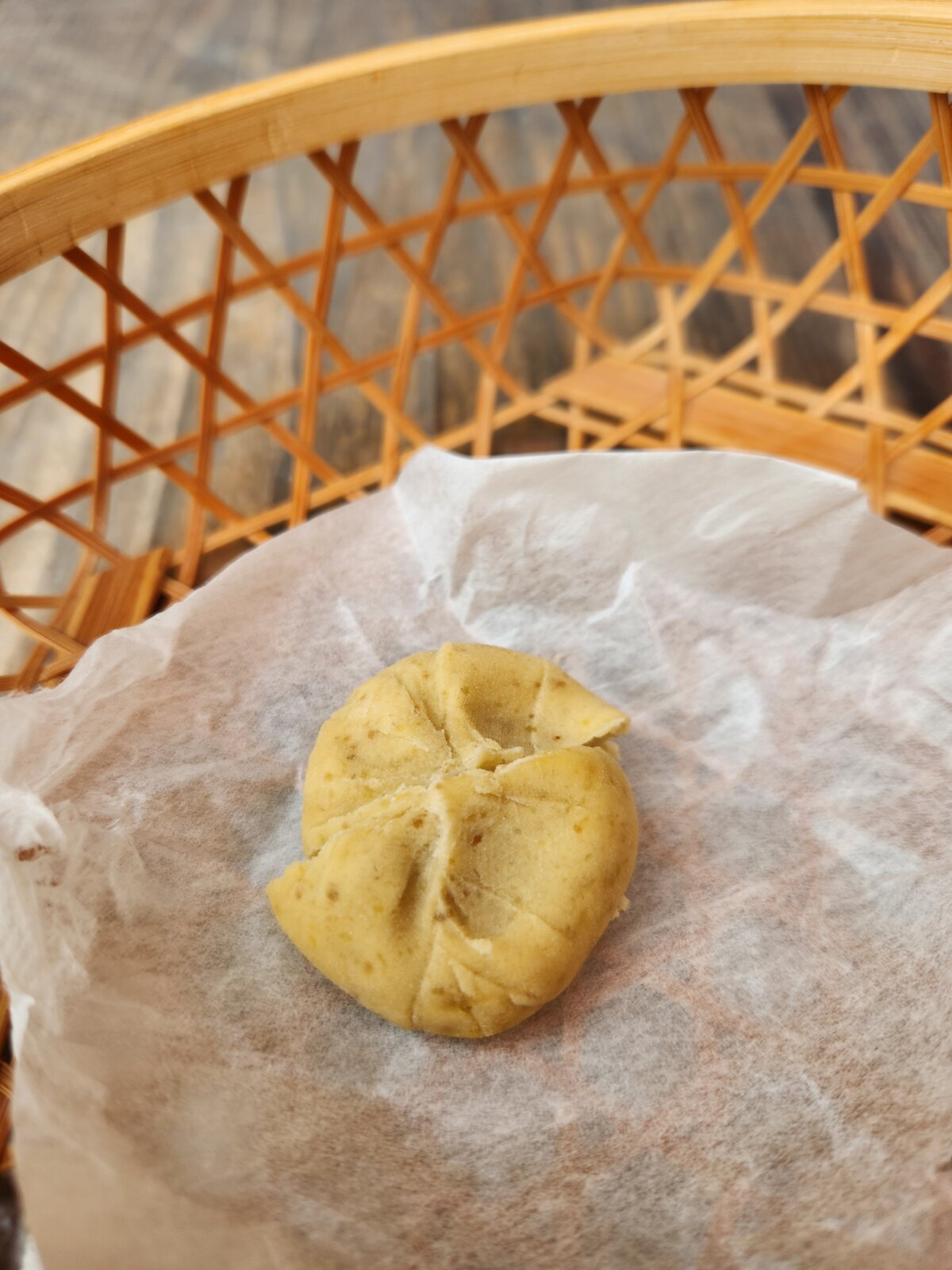
Facilities & Services at Michi-no-Eki Tenryu Sozu Hanamomo-no-Sato
Restrooms: Men’s (3 urinals, 2 stalls) / Women’s (4 stalls) — located near the dining area and parking lot
Nursing room: None
Accessibility: Available
Free Wi-Fi: available
Charging stations: None
Restaurant: Available
The restaurant offers a variety of dishes, including four weekday-limited lunch sets—Tempura Soba, Tempura Udon, Katsu & Soba, and Katsu & Udon—each priced at 900 yen. These lunch sets are limited to 20 servings per day.
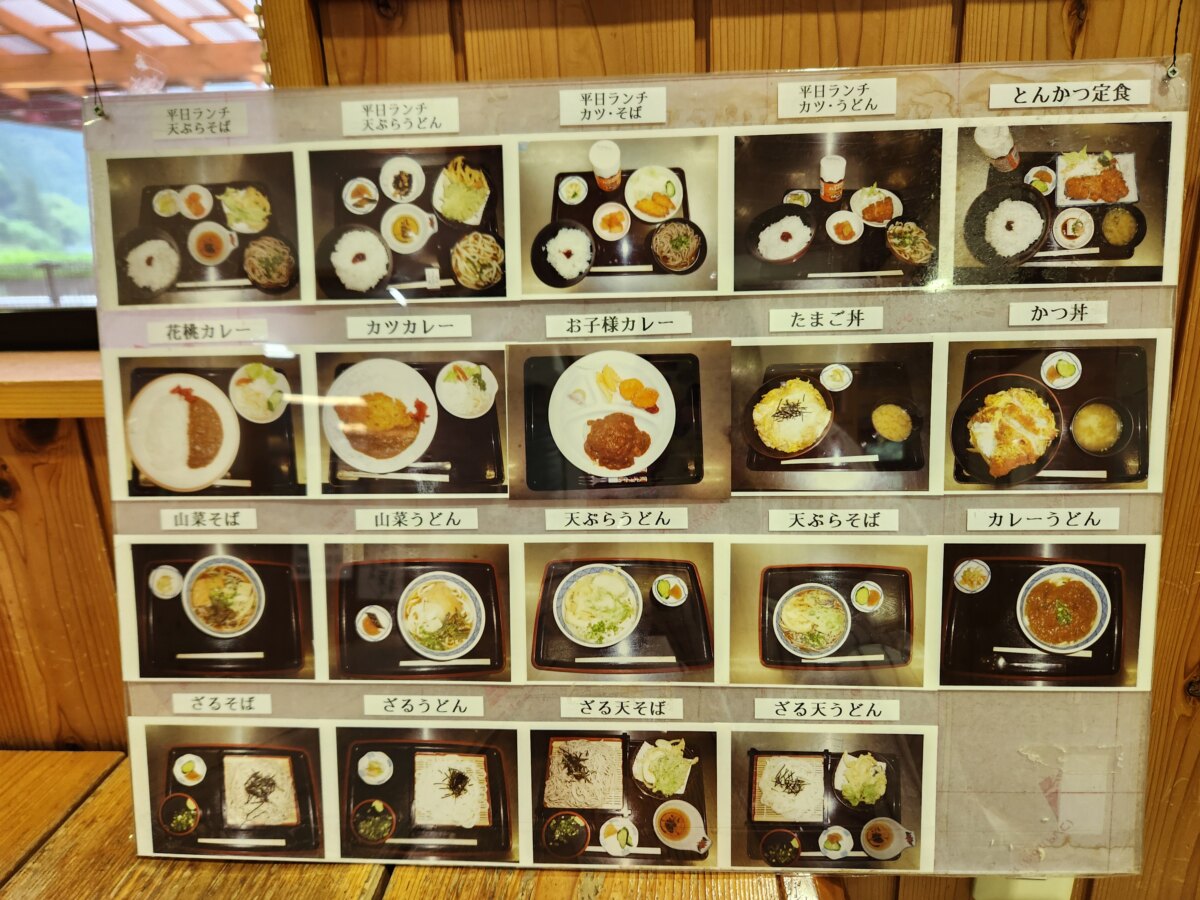
The soba broth is made from kombu seaweed, shiitake mushrooms, and a secret ingredient, creating a slightly sweet flavor that blends perfectly with the noodles.
It’s known to be delicious and highly praised by visitors.
The curry, made by slowly simmering vegetables like tomatoes and onions, is a popular dish loved by many fans!
The seasonal “Warabi Mochi” is also a favorite item.
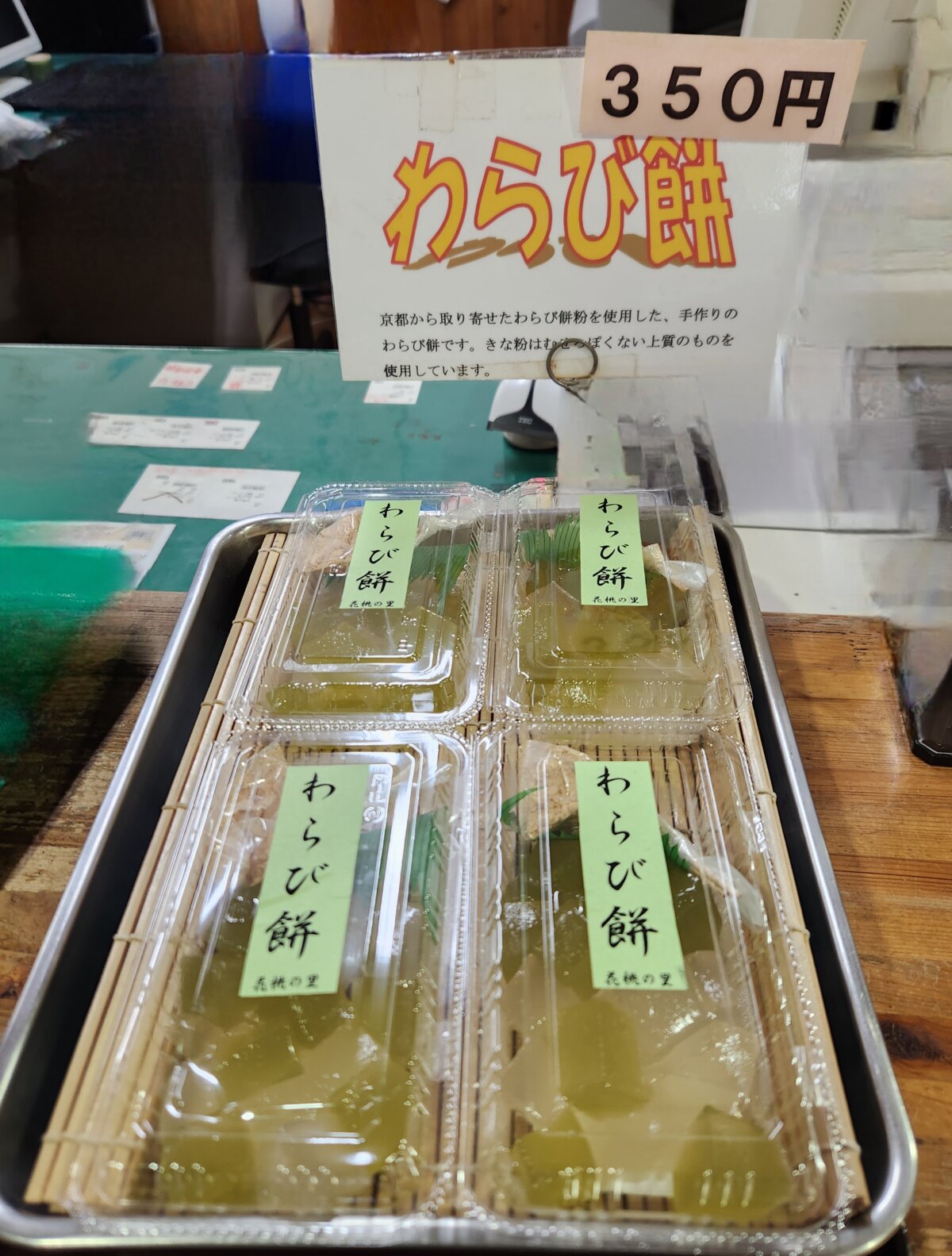
“Warabi Mochi” is available as a limited-time item from early summer until the end of September, priced at 350 yen per pack.
Made with delicious water from Tenryu and special “warabi mochi flour” sourced from Kyoto, each piece of Warabi Mochi is carefully handmade.
Its melt-in-your-mouth texture is what makes it so popular.
Since the kinako (roasted soybean powder) is served separately, you can adjust the amount to your liking — a nice little bonus!
Because only a limited number are available and they often sell out quickly, be sure to check them out when you visit.
Crowd Information at Michi-no-Eki Tenryu Sozu Hanamomo-no-Sato
From March to May, when the flower peach trees are in bloom, the area can get busy, especially around lunchtime.
If you plan to have lunch, we recommend making a reservation to secure your seat.
Michi-no-Eki Tenryu Sozu Hanamomo-no-Sato: Store & Parking Information
Address: 31-10 Okawa, Tenryu-ku, Hamamatsu, Shizuoka Prefecture, Japan
Phone: 053-923-2339
Closed: Every Tuesday (open throughout March)
Hours:
Local Products Store
Weekdays: 9:30 AM – 3:00 PM
Weekends & Holidays: 9:30 AM – 3:30 PM
Restaurant
Weekdays: 11:00 AM – 2:00 PM
Weekends & Holidays: 11:00 AM – 2:30 PM
Dining Seating:
Outdoor terrace: 11 tables (4 seats each)
Indoor tables: 4 tables (4 seats each)
Tatami (traditional Japanese floor seating): 3 tables (6 seats each)
Reservations:
Reservations are required for groups of 6 or more.
Even for smaller groups, it’s recommended to call ahead to check availability during busy times.
The multipurpose community hall and tatami room in the separate building require advance reservations.
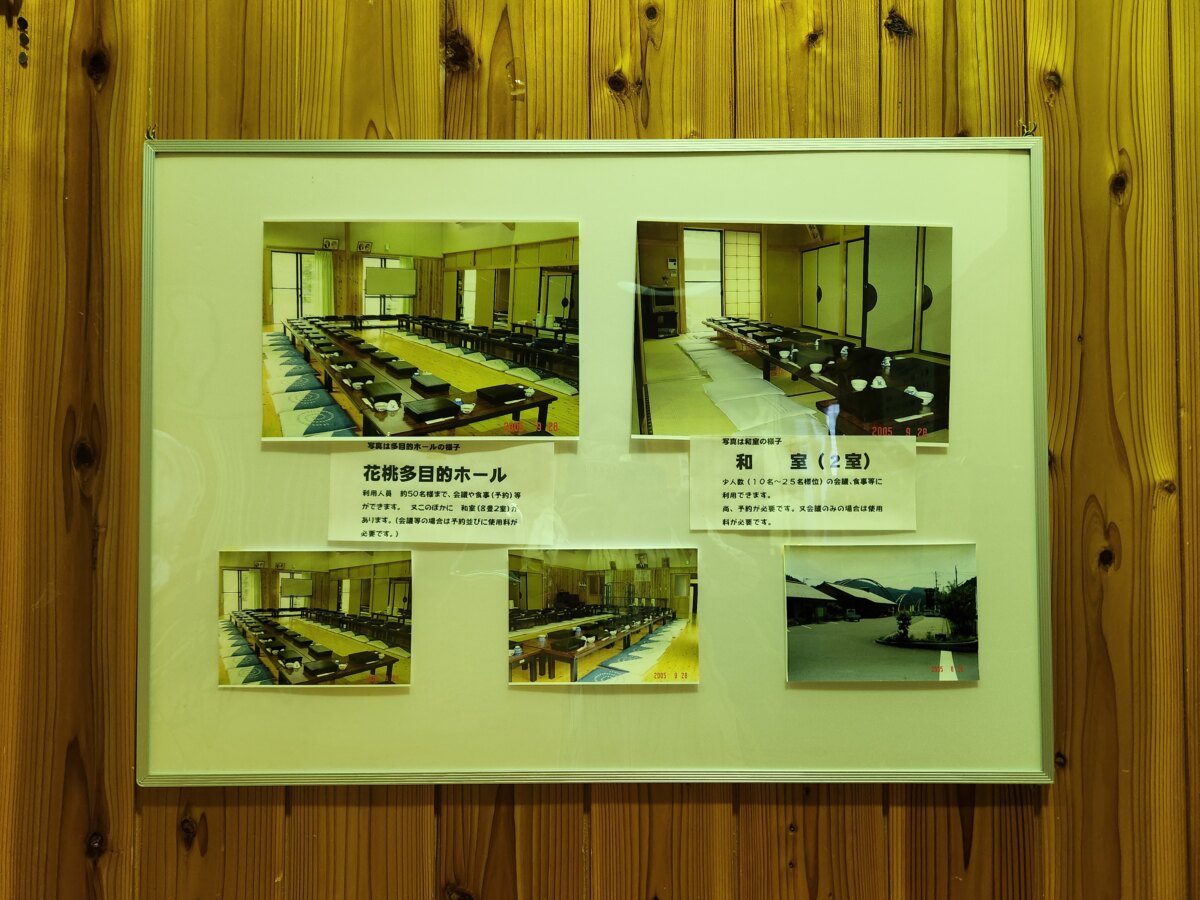
Official Website: https://hanamomo-sato.com/
Access: 11 km from Hamamatsu-Hamakita Interchange on the Shin-Tomei Expressway, about a 25-minute drive by car.
Parking: Large vehicles: 2 spaces, Regular cars: 48 spaces, Disabled parking: 1 space, Electric vehicle charging station: 1 spot
Bicycle parking: Available
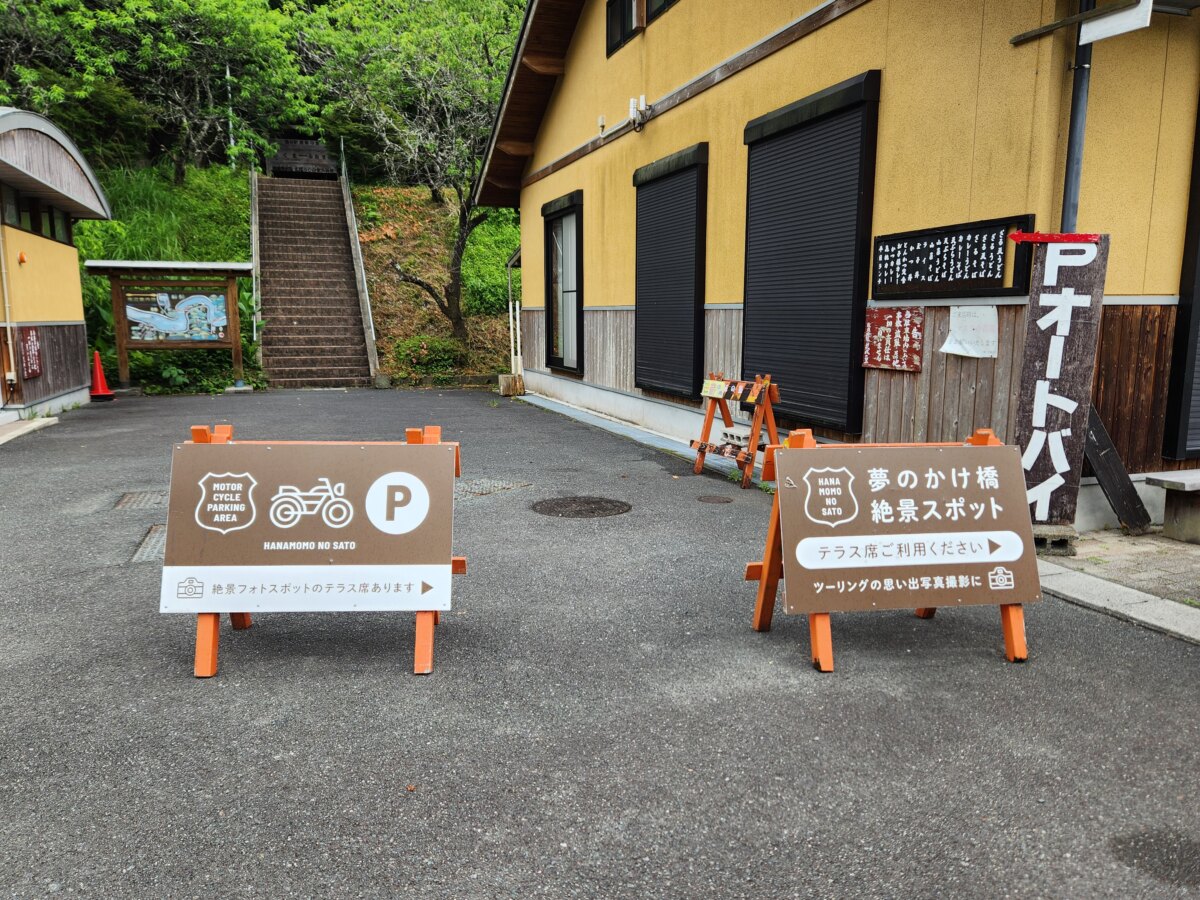
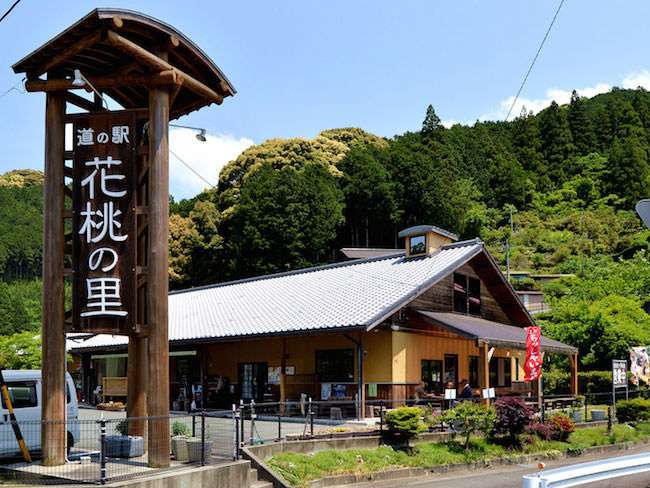
Michi-no-Eki Kunma Suisha-no-Sato, Michi-no-Eki Tenryu Sozu Hanamomo-no-Sato, Michi-no-Eki Ippukutokoro Yokokawa
A Michi-no-Eki is a roadside rest area in Japan. There are three found in the Tenryu area. At these rest areas, visitors can find products unique to the countryside and experience a nostalgic atmosphere not found in the city. Kunma Suisha-no-Sato is located in the town of Kuma, which historically flourished as a post town along the Akiha-Horaiji Kaido. You can try some homemade dishes, including soba (buckwheat noodles) and Gohei mochi. At Tenryu Sozu Hanamomo-no-Sato, there's homemade Hanamomo curry rice and soba alongside many local products. At the nearby reservoir, you can enjoy canoeing.
Nearby Attractions Around Michi-no-Eki Tenryu Sozu Hanamomo-no-Sato
Around Michi-no-Eki Tenryu Sozu Hanamomo-no-Sato, you’ll find a variety of attractions—from spots to enjoy nature to places rich in history.
【Notable Nearby Attractions】
Michi-no-Eki Kunma Suisha-no-Sato
Soichiro Honda Museum of Manufacturing Heritage
Looking for activities in Hamamatsu and Lake Hamana?
↓↓ Check out here ↓↓
A Message to Our Readers from Mr. Masahiro Fujimoto, Director of Hanamomo-no-Sato Co., Ltd.
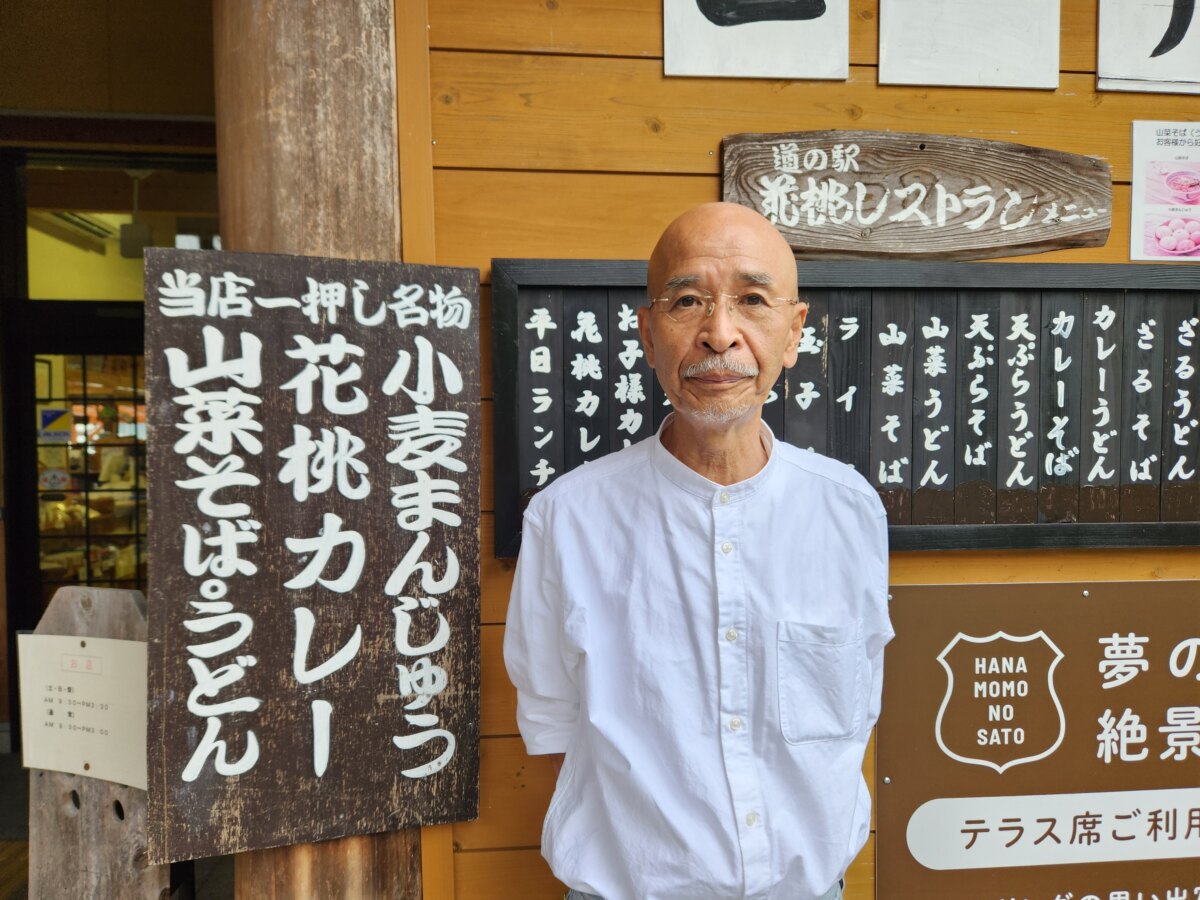
At the gateway to the Hoku-En area, Michi-no-Eki Tenryu Sozu Hanamomo-no-Sato is home to around 350 flowering peach trees.
Starting in early March, their soft pink blossoms gently welcome visitors and warm their hearts.
Spanning the surface of the Funagira Dam, the Yume no Kakehashi (“Bridge of Dreams”) is built on the remnants of the old JNR-era Sakuma Line bridge piers—now a phantom of the past.
From here, you can enjoy a stunning 360-degree view that soothes the soul in every season.
The area around Hanamomo-no-Sato offers plenty to explore.
You can try canoeing lessons at Aitsu Marina, visit a local wine cellar, or head to the Tsuki area—featured in the novel “Three Kilometers to the Moon”—where you’ll find lakeside cottages and a national boat racing venue.
There’s so much to see and do, so be sure to visit Tenryu Ward in Hamamatsu!
 ̄ ̄ ̄ ̄ ̄ ̄ ̄ ̄ ̄ ̄ ̄ ̄ ̄ ̄ ̄ ̄ ̄ ̄ ̄ ̄
This time, we introduced Michi-no-Eki Tenryu Sozu Hanamomo-no-Sato, a peaceful roadside station nestled in lush greenery.
It’s the perfect place to take a relaxing break during a road trip.
Most of all, the friendly and welcoming staff made the experience feel truly comfortable and heartwarming.
From handmade manju and fine Tenryu tea to a wide variety of local specialties, Michi-no-Eki Tenryu Sozu Hanamomo-no-Sato has something for everyone.
There are also plenty of great photo spots—so be sure to stop by and see it for yourself!
Photo Courtesy of Hanamomo-no-Sato Co., Ltd.
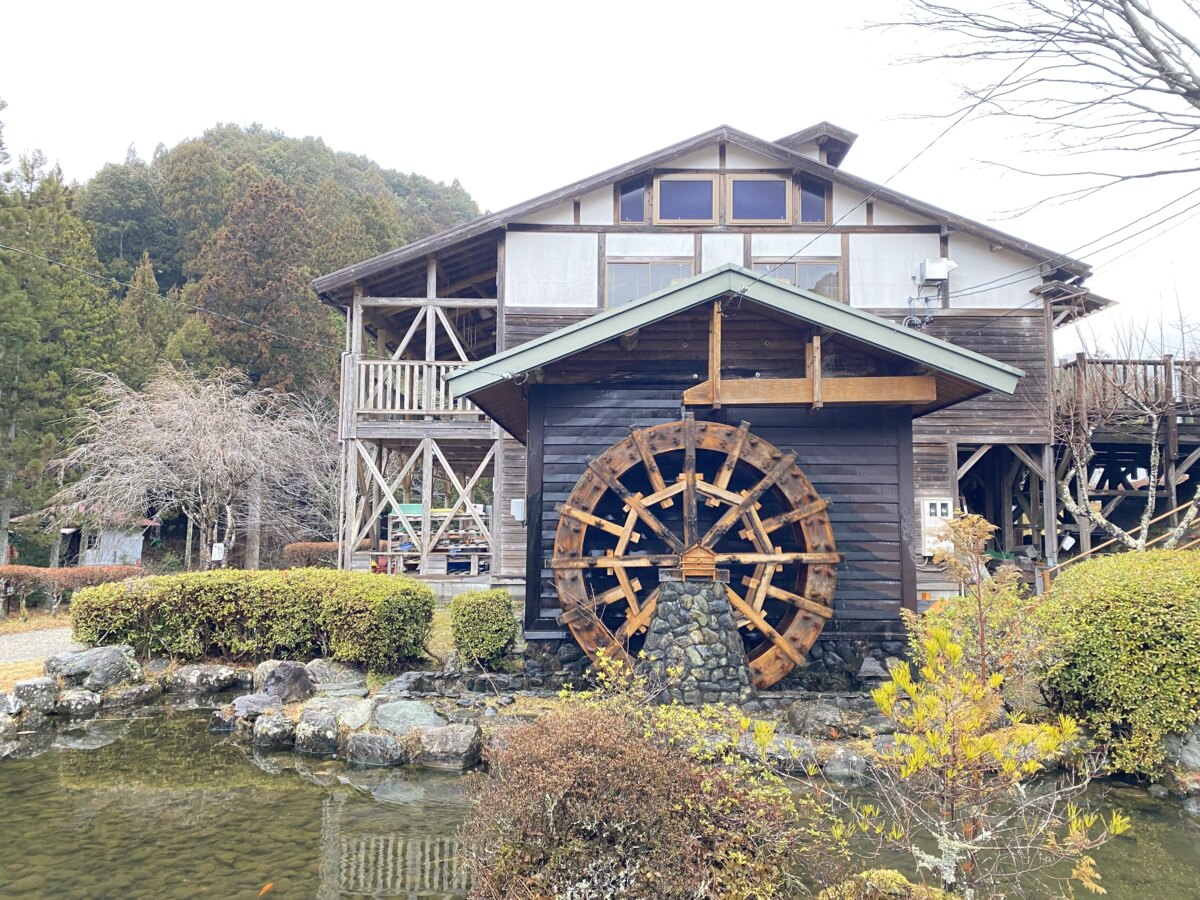
Make Your Own Soba Noodles & Savor Local Dishes at Michi-no-Eki Kunma Suisha-no-Sato
